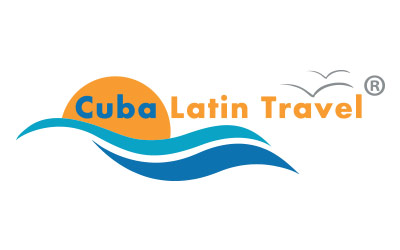
- VOLI PER CUBA
- VOLI INTERNI
- NOLEGGIO AUTO A CUBA
- BUS E TRASFERIMENTI CUBA

HOTEL A CUBA
- HOTEL COLONIALI
CASE PARTICULAR
- COMBINATI CUBA
TOUR DI CUBA
- ESCURSIONI CUBA
SPORT ACQUATICI
- CORSI DI BALLO A CUBA
- SPORT A CUBA
- Invito Turistico / Riunificazione Familiare
VISTO TURISTICO
- POLIZZA FIDEJUSSORIA
- POLIZZA SANITARIA DI VIAGGIO
- POLIZZA SANITARIA INCOMING
- POLIZZA ANNULLAMENTO VIAGGIO
- TUTTI I DOCUMENTI/CERTIFICATI
- Certificati per Cubani
- Certificati per Italiani
- Matrimonio a Cuba
- Matrimonio in Italia
- Cittadinanza Italiana
- Residenza a Cuba
- Guida di Cuba
- Preparare la Valigia per Cuba
- Geografia di Cuba
- Clima a Cuba
- Flora e Fauna a Cuba
- Dogana Cuba
- Mezzi di pagamento a Cuba
- Telefoni e internet
- Mappa di Cuba
- Foto di Cuba
- Video di Cuba
- Dove acquistare i nostri servizi
- Dicono di noi
- I nostri Promoter

- OFFERTE VIAGGIO
- Città">Città > Città
- Hotel">Aeroporto > Hotel
- Trasferimenti privati
- Visto Turistico
- Polizza Fideiussoria
- Polizza Sanitaria di Viaggio
- Polizza per Invito Turistico
- Polizza Annullamento Viaggio
- Condizioni e Penali
- Privacy Policy
- Termini e Condizioni
- Note Legali
- Collabora con noi
Sede a Cuba

Hai bisogno di informazioni o di un biglietto aereo?

Promo JetPark Malpensa
Approfitta dello sconto del 5% sul "Servizio Standard" dedicato ai nostri clienti.

- Voli per Cuba, hotel e vacanze a Cuba

Benvenuti in Cuba Latin Travel
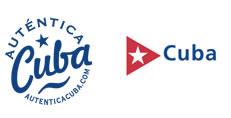
Voli per Cuba

NOLEGGIO AUTO

STATI UNITI

TOUR + MARE

INVITO TURISTICO

POLIZZA VIAGGIO

Gli Hotel più Richiesti
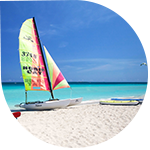
Hotel Grand Memories Varadero Varadero | 5 stelle
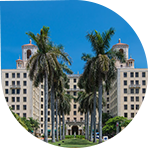
Hotel Nacional de Cuba Havana | 5 stelle

Hotel Ocean Casa del Mar Cayo Santa Maria | 5 stelle

Iberostar Grand Hotel Trinidad Trinidad | 5 stelle lux

Invito Turistico

Invito Turistico All Inclusive

Polizza Fidejussoria

Polizza Sanitaria Incoming

La Sede di Cuba

Polizze Sanitarie
Polizza sanitaria di viaggio, visto di ingresso a cuba.

Come fare un Visto Turistico

Grande novità!
Da oggi puoi pagare in comode rate: da 3 a 4 con Scalapay per l'acquisto dei seguenti servizi: Biglietteria aerea, Noleggio auto, Hotel, Trasferimenti e Vacanze All Inclusive.

Per qualsiasi dubbio non esitare a contattarci
Come funziona?

Cuba Latin Travel ®
Informazioni pratiche, seguici sui social.

Per offrirti un'esperienza di navigazione sempre migliore questo sito utilizza anche cookie di partner selezionati. Se vuoi saperne di più, o se vuoi modificare il tuo consenso clicca qui Proseguendo la navigazione o cliccando su Accetto acconsenti all'utilizzo dei cookie impiegati dal nostro sito. Cliccando su un link o proseguendo la navigazione in altra maniera, acconsenti all’uso dei cookie.

- Get in touch
- Itineraries
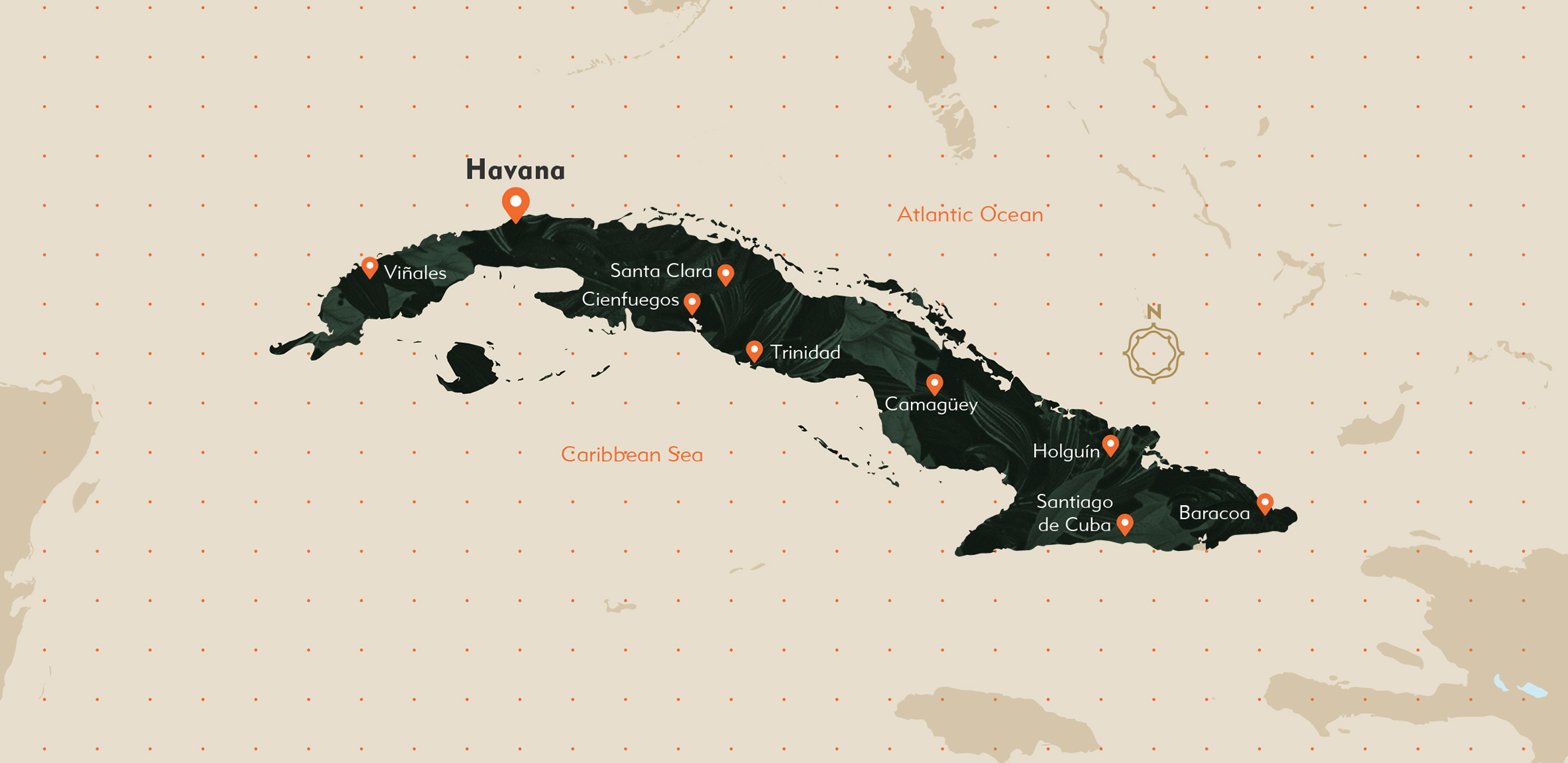
Cuba's Moment
Although isolated from the United States for decades, Cuba has never faded far from our hearts and our imaginations. Her music, her culture, her cuisine and, of course, her rum and cigars, are all well known and loved around the world.
Despite some recent changes in US rules on Cuba travel, this is still the perfect time to visit island to experience her culture and spectacular natural beauty firsthand through a private cultural itinerary . And with our headquarters in Tampa, Florida–home of one of the oldest Cuban communities in the U.S.– Exeter Latin America offers you a particularly deep connection to the island.
Whether just a long weekend exploring the fascinating contrasts of the capital, Havana , to a longer exploration of the island including the lush Viñales Valley , the colonial splendor of Cienfuegos and Trinidad , and the heart of Afro-Cuban culture in Santiago, you will be truly amazed by a place and a people unlike any other.
Compelling Cultural Exchanges
Traveling to Cuba with Exeter Latin America will feature an in-depth cultural experience through a full daily itinerary meeting people of all backgrounds, in order to reach the Cuba that few visitors ever experience.
Below you’ll find just a few examples to pique your curiosity, but the options are constantly growing, and we look forward to tailoring a unique private people-to-people itinerary for you.
- Explore Old Havana’s array of styles – from colonial Baroque to 50s modernism – with a specialized architecture guide and learn about the challenges of restoring decaying historic structures.
- Visit the studios of emerging artists for a snapshot of the vibrant arts scene through exchanges with the artists.
- Enjoy a food-focused exchange with a Havana chef, visiting markets and urban cooperative farms and learning how he adapts his small business to challenges in today’s Cuba.
- Trace the steps of Hemingway with a noted expert, including a stop to meet the fishing village that served as inspiration for one of Hemingway’s most iconic works.
- Meet a small tobacco farmer and learn how to roll a cigar in Viñales , the heart of the tobacco region
- Sample the best Cuban rum paired with some of the country’s most iconic – and delicious – dishes with a Cuban sommelier and entrepreneur.
Customized for You
All of our Cuba journeys are private and completely tailored to your specific interests and needs, while always featuring the most upscale experience possible and complying with the U.S. general licenses for legal travel to Cuba.
This customization extends even to your accommodations. In addition to the best available hotels permissible for stay by U.S. citizens, we have the connections and firsthand knowledge to offer you a carefully selected array of privately-owned serviced apartments, B&Bs and villas across the island. These represent a far better value than most state-owned hotels, giving you and your group or family greater flexibility and privacy, as well as better, more personalized service.
Legal Cuba Travel
Exeter Latin America operates private journeys to Cuba in compliance with the U.S. Department of Treasury’s general licenses for Cuba travel. We stay abreast of any and all U.S. regulation changes, to ensure your trip meets the requirements. (Contact us for the latest on Legal Cuba Travel.)
Our custom journeys include the required full daily schedule of cultural exchanges, while still being tailored to your interests and giving you some flexibility. We use our favorite private sector guides and drivers, and you will generally dine only in our favorite privately-owned restaurants ( paladares ) – all to ensure you’re supporting Cuba’s burgeoning private sector as much as possible.
Sample Itineraries

Six Perfect Days in Cuba

Weekend in Havana
A taste of cuba, havana art exploration, excited to learn more.
Get in touch with us with us today to start planning!
Please leave this field empty.
This website or its third-party tools use cookies, which are necessary to its functioning and required to achieve the purposes illustrated in our privacy policy. If you want to know more or withdraw your consent to all or some of the cookies, please refer to our privacy policy. Find out more.
Cuba through the lens
An exclusive tour designed for photographers and photo lovers..
If there is a magic island, it’s Cuba

Christopher Columbus defined it: "The goodliest land that eye ever saw, the sweetest thing in the world."
But do not dwell on this historic quote, come to discover your own Cuba, set your sails with us discovering the most precious treasure of the Carribean.
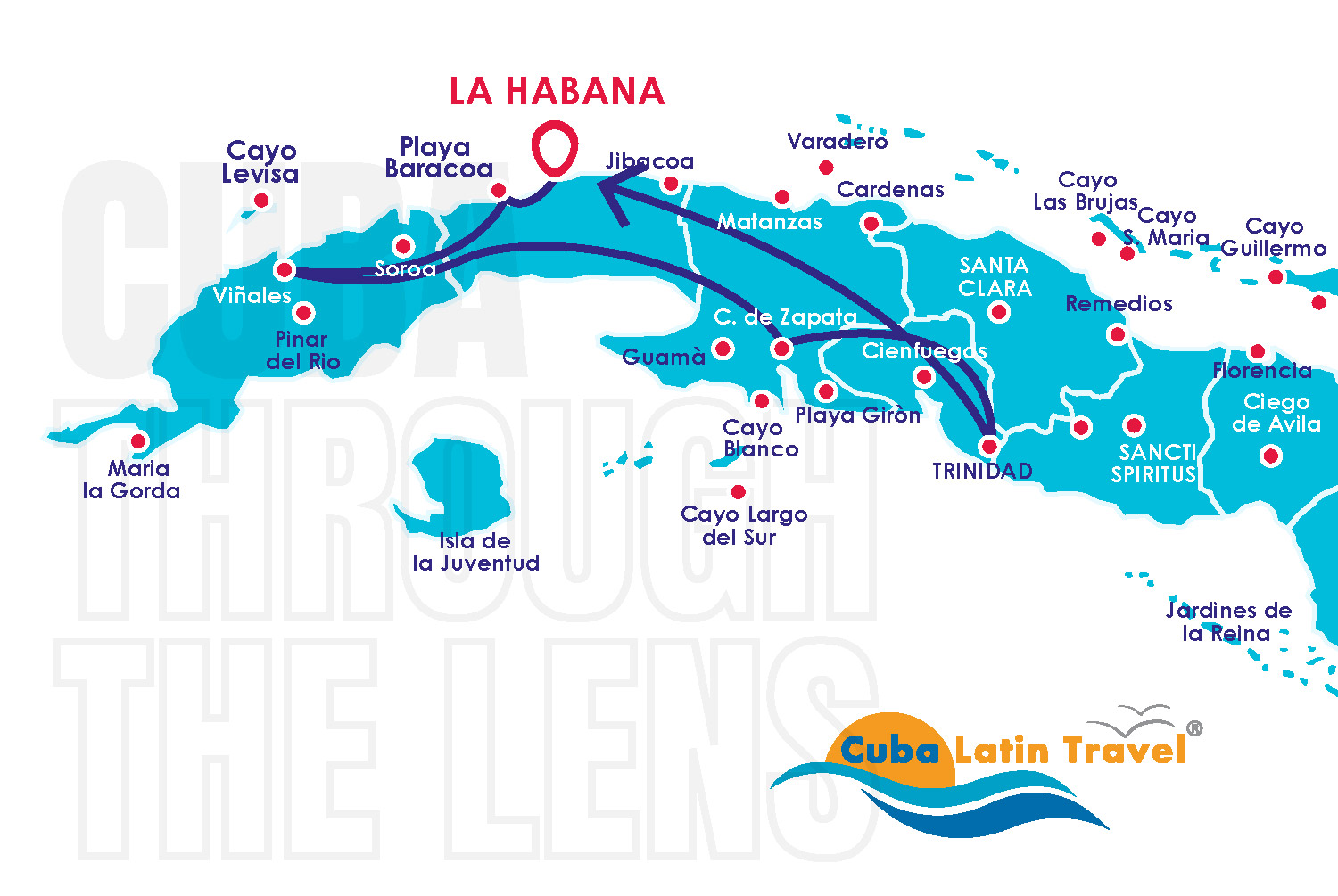
Meet a great cuban documentarist and photographer The purpose of this trip is visiting Cuba with the detailed eye of an artist.
Beyond the iconic places, you will have the opportunity to meet a great cuban documentary maker and photographer who had the privilege of accompanying Fidel for almost three centuries, saving a big witness about one of the greatest man not only of this country, but also of the Latin America and the world.
Mentioning his words "you can share or not his ideas, be his follower or opponent, be in his favour or against him, but you can not remain indifferent in front of his greatness".

Roberto Chile
Filmmaker & photographer
I’m glad that people like you come to visit us,looking for and bringing love. Once here, we will share knowledge, experiences, ideas and dreams. We will take a tour together in Havana to learn about and photograph its sea, sky, streets, houses and people.
I will open the doors not only of my home, but also of my heart.
Hasta pronto!
Read Biography
I was born in Havana in 1954, I’m a telecomunication engineer but I chose audiovisual production and photography.
As a documentary director, cameran and photographer, I led a huge number of documentaries about Cuba's society and Culture, including Fidel Castro's government. My most famous documentaries are: Desafío; En las laderas del Himalaya; Sencillamente KORDA; Elogio de la virtud; Chávez y Fidel hasta siempre; Soy Tata Nganga; Esencias, La Colmenita en Estados Unidos; Sacha, un niño de Chernobyl and miniseries "Alas con Puntas"
As a director, producer, photographic director and cameraman, I joint various audiovisual productions with prestigious directors and important tv broadcast producers belonging to both public and private sector.
As a photographer, my greatest individual projects are: Afrodescendientes, Guabanacoa-Cuba; Fidel es Fidel, somos y done anida la poesìa. My photos were exposed in Cuba, United States, Spain, Portugal, Germany, Belgium, Gran Canaria, Mexico, Argentina and other more, published in books, magazines and advertising billboards in and out of Cuba.

International photographer
I love Cuba and photography so much and I decided to merge my two great loves in order to drive other photographers through a special experience where we will reach the heart of an unique culture in the world and the marvelous colours of the beautiful land which hosts it.
Professional photographer since 1999, I’m specialized in outdoor sports photography.
I have been the official photographer of international events like world’ sailing championship star class and of the International Polo Cup in Livigno, I have been working for years taking photos of the connection between sports, animals and nature.
My photos were pubblished on national and international magazines including Corriere della Sera, Quotidiano Nazionale, Elle and Vogue.
For years, outside of work, I have been developing my passion about street photography.
I have been visiting Cuba assiduously since 2007, I spent in the island at least 2 of the last 15 years and I deeply know a lot of aspects which are not “turistic”
I speak fluently English and Spanish languages.
I reached 1974 meters of Pico Turquino, the highest mountain in Cuba and I admired the coral reef from 25 metres of depth at Playa Santa Lucia.
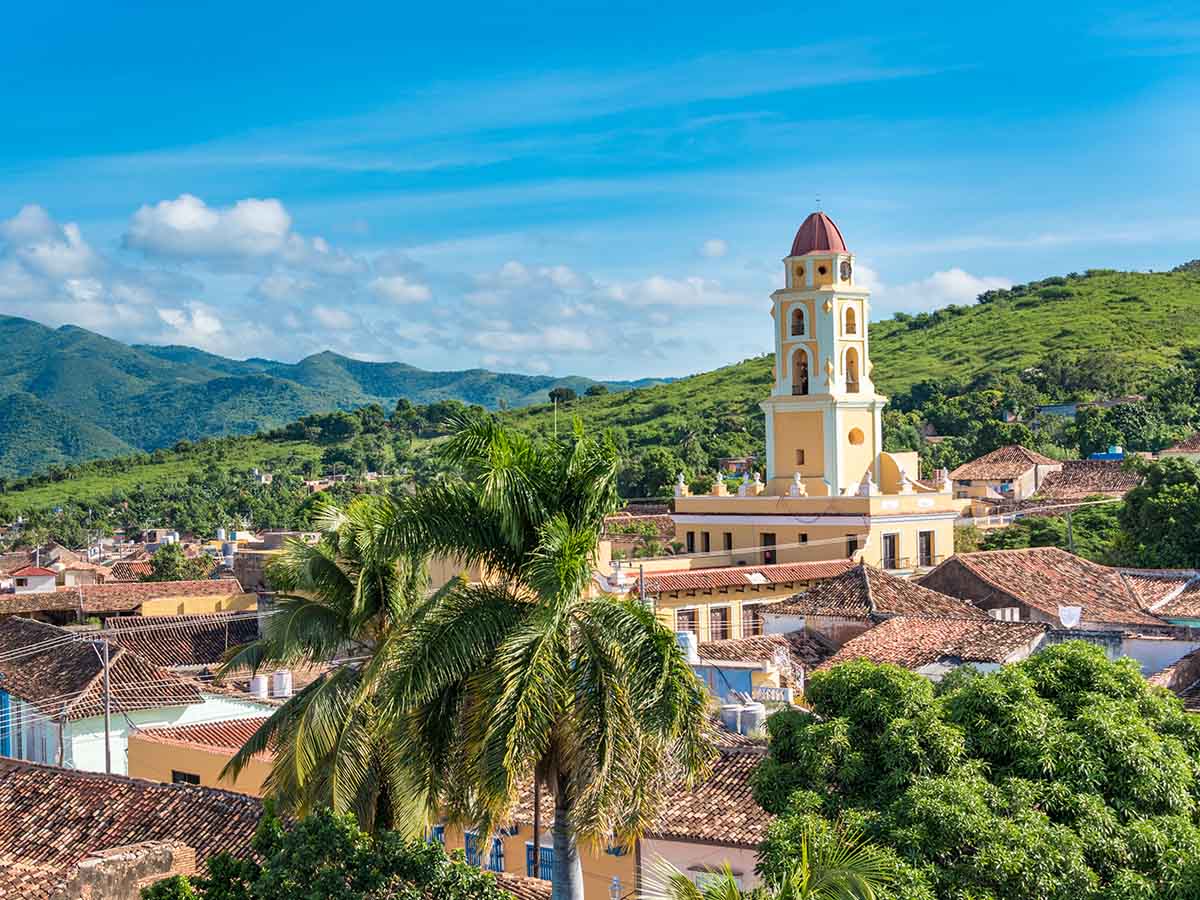
We will start with a rewarding visit in Havana through its ancient and modern streets, characterized by cultural and religous values, which stayed intact over the years and the different historical periods. In fact, Ernest Hemingway said that the only ones that could beat it in terms of beauty were Venice and Paris.
We will go on with Vinales , where you will be enchanted by its incomparrable beauty. Thanks to the presence of the Mogotes, which only exist in few places in the world, they look like sentinels who protect the majesty of the valley. Beyond its natural power that emanates, you will have the opportunity to admire an outdoor museum and take photos of the best tobacco plantations in the world .
We will continue our trip towards the biggest swamp of the Carribean , protected in many ways, especially by its status of “Reserve of Unesco’s biosphere and site of ramsar”, where you will enjoy nature in its purest form,a true eden for naturalists and birdlife photo lovers.
We will then reach the third city founded by spanish monarchy in cuba: Trinidad . With its title of “world craft city” it’s one of the better preserved colonial cities of America, an urban and architectural jewel of the continent. Walking through its streets will make you feel like being in a city that seems to have stopped in time, in the XVI century, with its cobbled roads, where expert weavers and seamstresses offer their works hard to be refused.
On the outskirts of city, the valley of the ingenios, world heritage, located between sea and mountains, a true archeological monument of cuban sugar industry .

Cuba through the lens Tour
In this trip we will take you behind the scens of Cuba's tourist veil and expose you to the inner city culture which the authentic Cuba represents.
Day By Day: Cuba through the lens Travel program
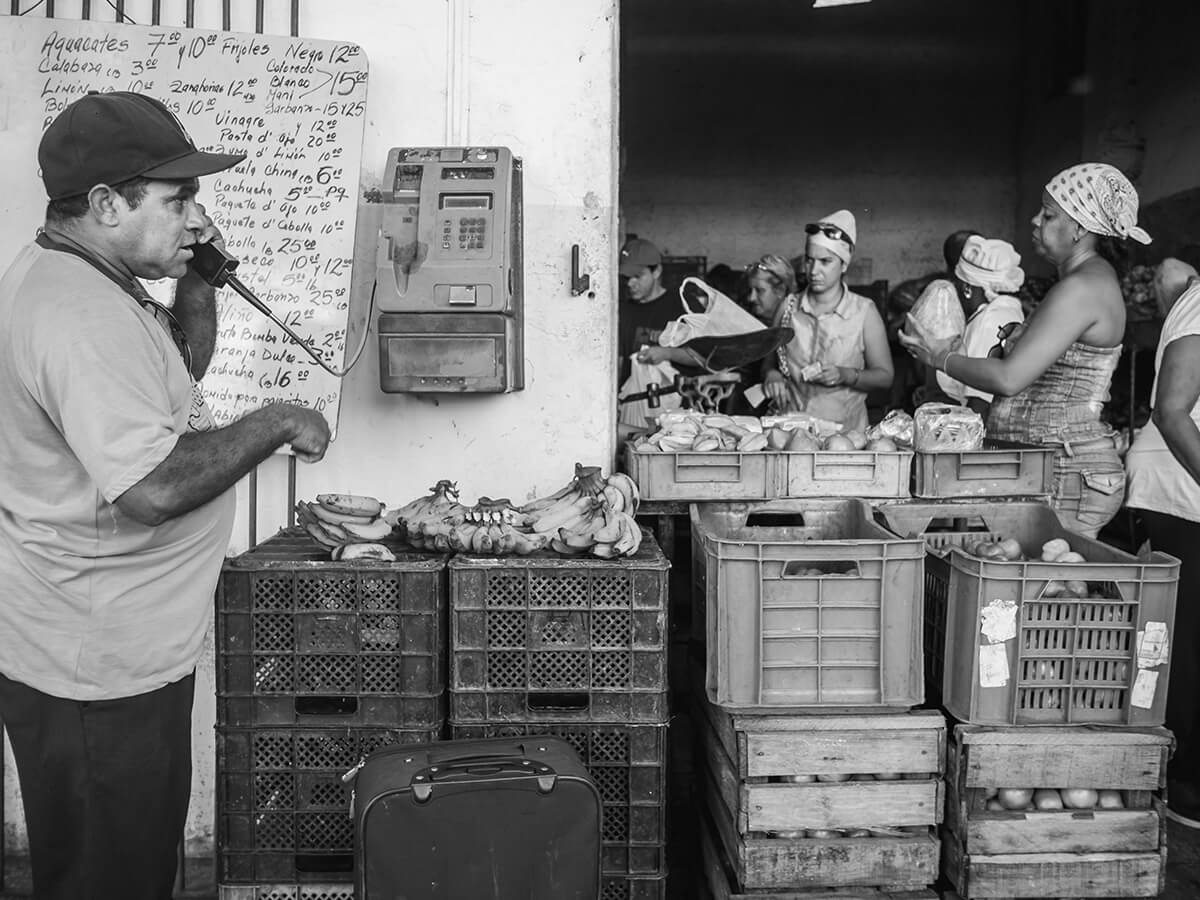
2023 Tour Prices From saturday 23 to monday 30 of october
- Included Not included
Not included: Return flight, other expenses and tips
Suggested list of equipment
Camera equipment.
Camera, lenses, batteries and charger.
The most common lenses for this type of photo tour are: zoom 24-70 mm, 24 mm , 28 mm, 35 mm , 50 mm, but we suggest to avifauna photography lovers to bring also a telephoto lens and a tripod or monopod for the sessions in Viñales and Cienaga de Zapata.
Memory cards, lens brush, cleaning cloth, extra camera battery, adapter for country destination.
Clothes and accessories
Sunglasses, sun protective hat, light trekking shoes, rain jacket and comfortable long pants.
Sun protection cream, mosquito repellent.
Book now. Limited offer!
Fill the form or contact us on WhatsApp: 0332 773 269
The exclusive "Cuba through the lens" tour is guaranteed with a minumum of 2 participants and a maximum of 12.
By selecting this, you agree to the Privacy Policy and Cookie Policy .
In collaboration with

Beach Destinations
Northern Africa
South East Asia
Australasia
New Zealand
UK & Ireland
Mediterranean
South America
Central America
Middle East
True Collections
Holiday Types
The Art of Gastronomy
About True Travel
Positive Impact Travel
Visit us: 208 Fulham Road, London, SW10 9PJ
True Travel

True Latin America Presents

Hand-crafted Travel to Cuba
Cuba is the largest island in the Caribbean and has so much to explore. It has a fascinating revolutionary history which you will learn about and relive during the excursions on your trip, as well as a vibrant music and dance culture. The scenery in Cuba is varied and beautiful – from rolling hills full of tobacco and sugarcane plantations, impressive mountains and forests to tropical lowlands and white-sand beaches, many of which are dotted with picturesque towns with attractive colonial architecture. Cuba is also home to many species of birds and is a good place for those who are interested in birdwatching to spot hummingbirds, trogons, parakeets among many more. Its beautiful coastline offers great opportunities to snorkel or dive, or simply relax on the beach, go for a romantic walk or a sunset boat ride. The warm, laid-back and charismatic Cubans will welcome you with open arms!
Capital city – Havana Local time (GMT+) GMT-4 Local currency – Cuban Peso
Travelling to Cuba with True
A True Cuba Itinerary
Our travel design process starts with you and your ideas, each trip created from a blank piece of paper.
Our Latin America specialists have created a selection of example itineraries to provide a sense of what can be crafted for you in Cuba.
Cuba’s Signature West
11 Day Itinerary
Guide Price: £4,400pp
Guide Price: $5,575pp
A journey through Cuba’s colonial past, travelling through historical cities, jungles and finishing the trip in a luxurious, all-inclusive beach resort for the ultimate discover tour of Cuba.
True Experiences In Cuba
The foundations of a memorable holiday are the experiences and Cuba has an abundance of activities to make each itinerary special.
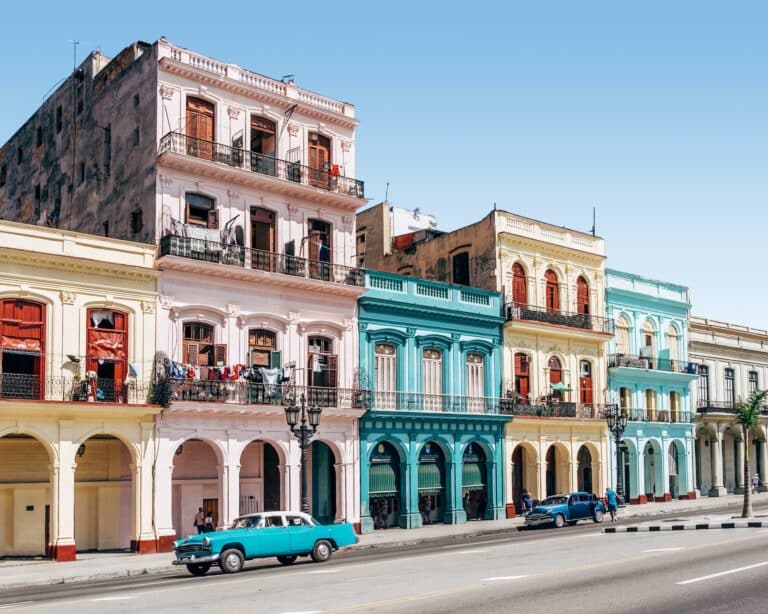
Exploring Havana by Vintage Car
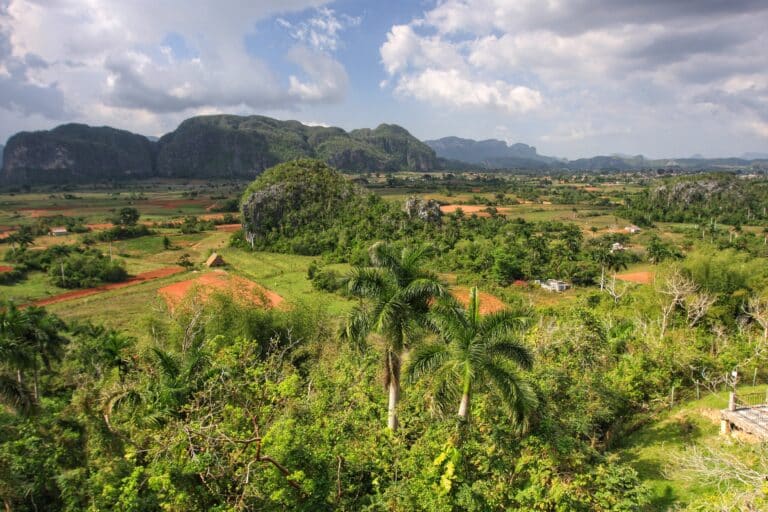
Horse ride through Viñales Valley

Learn to Dance Salsa, Cuban Style
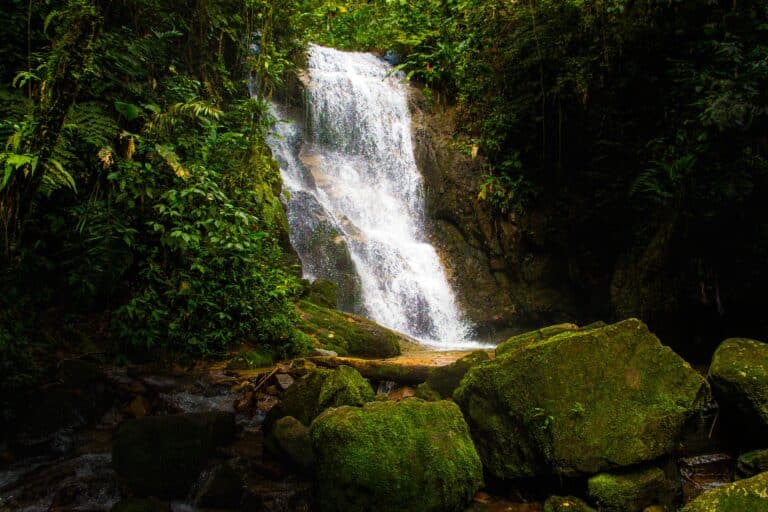
Hike through Tope De Collantes Nature Reserve
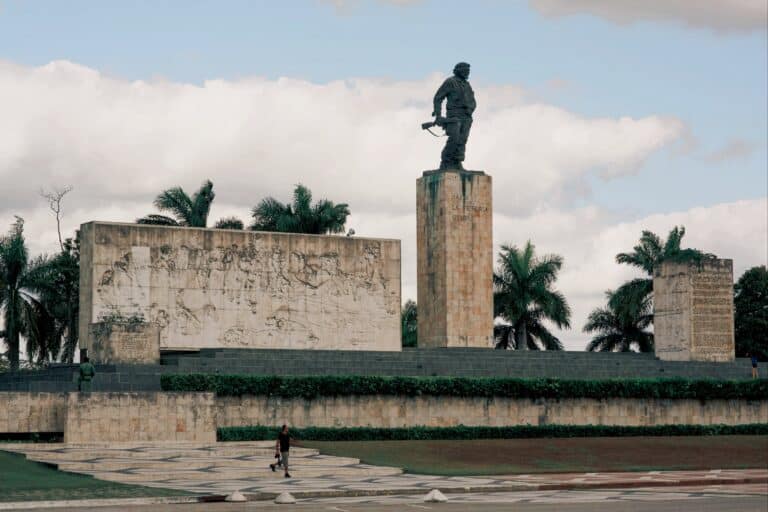
Visit Guevara’s Mausoleum in Santa Clara.
Our featured cuba accommodation.
Each trip True Travel curate is based on the experience you are looking for and as an independent travel operator, we are not obliged or committed to any properties. You can rest safe in the knowledge that the accommodation we recommend for your stay has been chosen based on your interests, not ours.
Royalton Cayo Santa Maria
This adults-only, all-inclusive luxury resort is one of Cuba’s best, located in the quieter area of Cayo Santa María. Right by the beaches and nestled between the greenery, it’s a great place to escape to.
Iberostar Heritage Grand Trinidad
This adults-only, high-end hotel is a wonderful place to stay in Trinidad, with a true sense that you’re in Cuba.
Melia San Carlos
Located within the heart of the historical part of Cienfuegos, the Melia San Carlos is a 4* property showcasing its original architecture along with a modern design inside, allowing for a great sense of place while ensuring full comfort.
Royalton Habana
Arguably Havana’s best hotel, the Royal Habana is an iconic building in the heart of the city. It boasts elegance with its modern and luxury design with beautiful views across the Malecón, the sea and the city.
Region Hotspots
Experience Cuba’s rich history and multifaceted beauty. From Havana , the vibrant capital, with its dancing and colonial history and lively culture. Varadero’s beaches lure sun-seekers. Trinidad , a UNESCO gem, preserves Spanish colonial charm. Explore Viñales Valley ‘s tobacco fields and lush landscapes. Immerse yourself in Santiago de Cuba ‘s Afro-Caribbean rhythms.
This unique city has one of the largest and best-preserved historical centres in Cuba. Colonial buildings blend with modern constructions in an unusual urban design. Visitors can have a view of this unique pattern from the roofs of some of Camagüey’s hotels, or explore the winding streets on bici-taxis, an innovative three-wheel cycle cab.
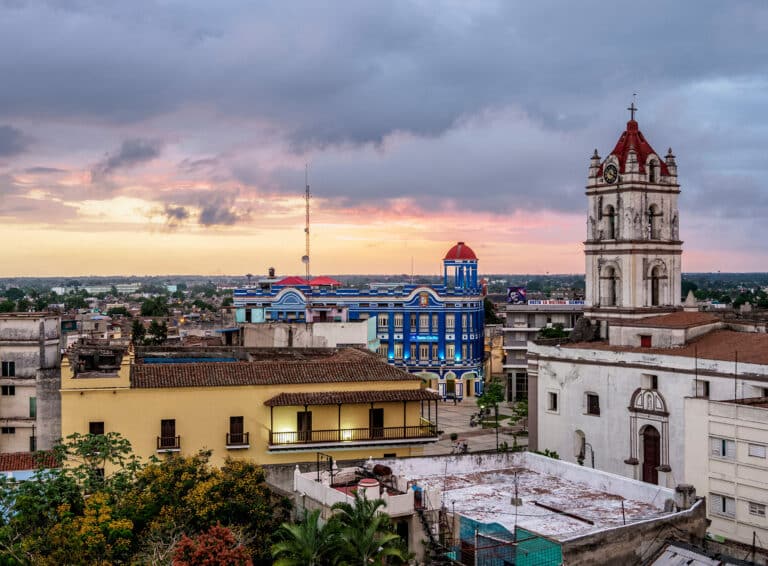
Caribbean Cayes
Composed by a series of tiny islands and three big cayes, Cayo Coco, Cayo Guillermo and Cayo Paredon Grande, this paradisiacal region is connected to the mainland of the province of Ciego de Avila through a 17-kilometre causeway and boasts 21 kilometres of white sandy beaches – truly designed to cater for the needs of those seeking isolation from the real world.
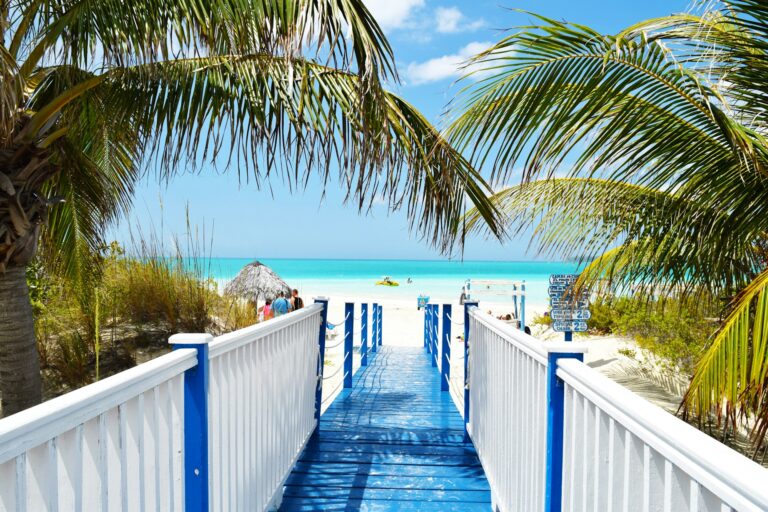
Cienfuegos, Santa Clara and Bay of Pigs
Known as the “Pearl of the South”, Cienfuegos is one of the largest holiday destinations in Cuba where visitors can practise a variety of nautical sports, climb the stunning mountains of the Sierra del Escambray or admire the legacy of Spanish and French settlers through its architecture and traditions.
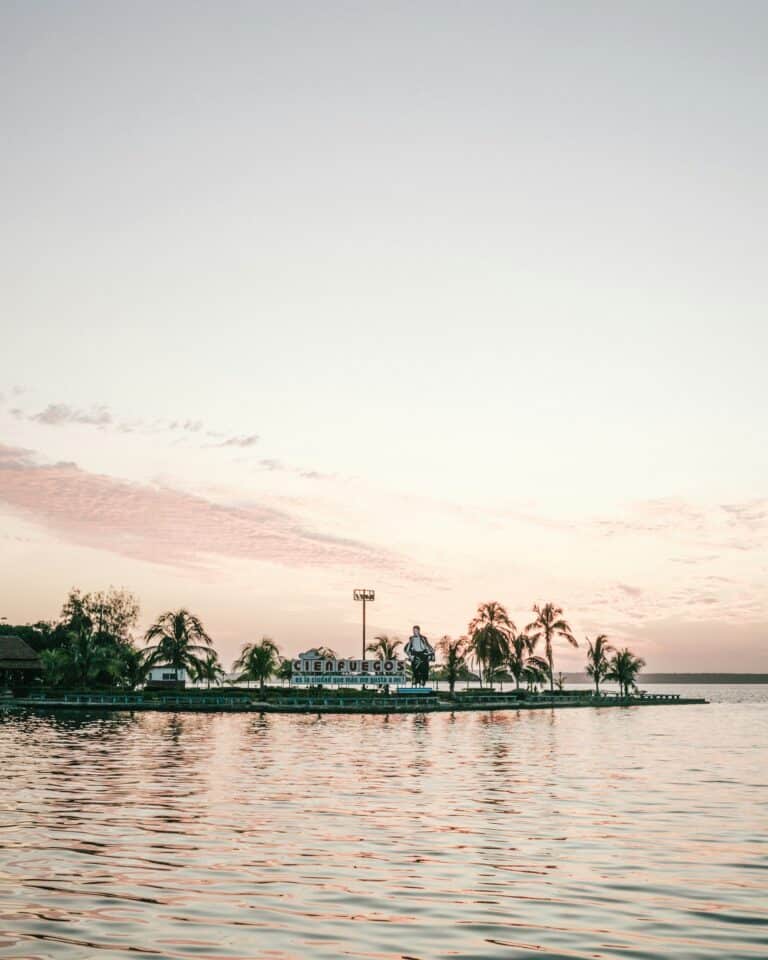
Havana is a mix of colonial architecture and traditions that enchant the most demanding foreign visitor, who can go back in time by choosing from a wide selection of Havana tours.
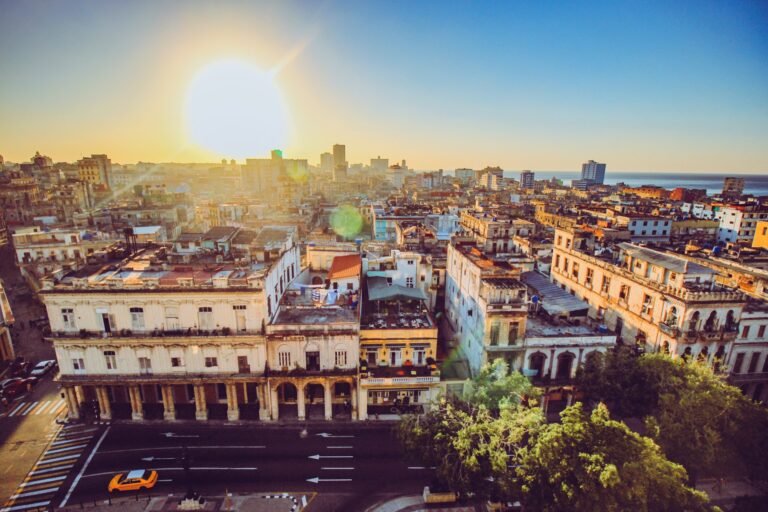
Santiago de Cuba
This major city offers the international traveller a wide array of surprises from architectural jewels, to battle grounds, colonial fortresses, sunken ships, mountain trails and the best of traditional music.
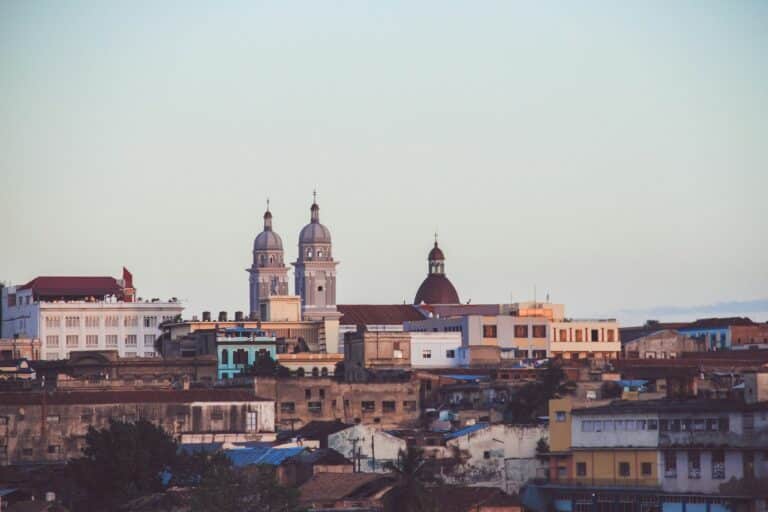
Trinidad & Escambray Mountains
This 16th century town offers a stroll along cobbled streets, Baroque architecture, Carrara marble-paved mansions with wrought iron work, the tradition of sugar cane harvesting and processing and the secrets of the marvellous mix of African slaves and Spanish conquerors which is present almost everywhere, in music, cuisine and people.
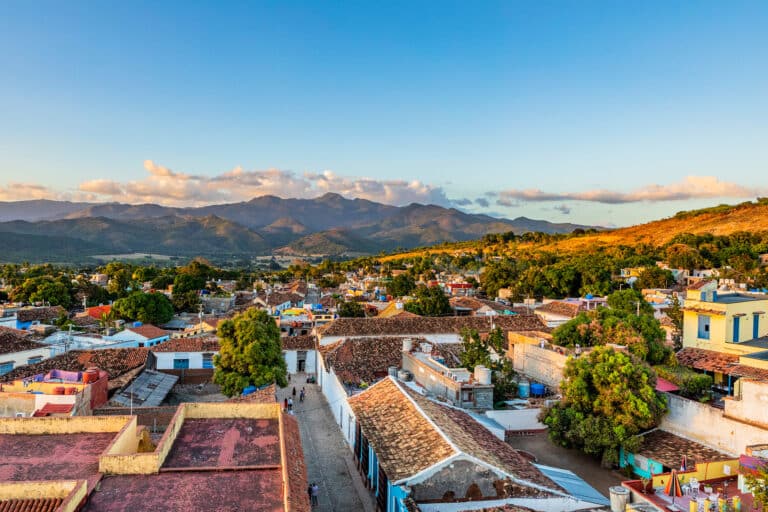
True Latin America
Taking care of your Latin America travel needs is Evie, our Senior Latin America Specialist. There are few people as passionate about the people and culture of the region, ensuring that in addition to the extraordinary destination highlights, you will experience the most authentic side of Latin America with a True Travel itinerary.

Evie has lived in Argentina and travelled countless times throughout Central and South America; acquiring a particular love for wildlife, epic scenery and endless outdoors adventures.

Cuba Journal

WHERE WE GO
Africa Asia Australasia Europe Latin America Middle-East
POPULAR DESTINATIONS
Italy South Africa France Costa Rica Thailand Botswana Peru
USEFUL LINKS
About Journal Careers Contact Request a Brochure Referrals Media Centre Cookie Policy Corporate Social Responsibility B Corp Privacy Policy Terms & Conditions
INSPIRATION
Itineraries Accommodation Destinations
GET IN TOUCH
- 208 Fulham Road, London, SW10 9PJ
- [email protected]
- 02031371247
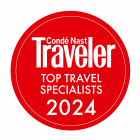
Start Planning
Find your inspiration, when are you looking to travel, who are you looking to travel with, what type of travel experience are you looking for, subscribe to our weekly newsletter.
Weekly travel inspiration, news and updates from our team of travel specialists
Most Popular tours

Western Skyline Ride
A week long cycling holiday through western Cuban countryside visiting Las Terrazas and the tobacco fields of Viñales via the spectacular Skyline Trail.
Private group dates available from £1474 pp.

Cuba Completa
A two-week cultural holiday visiting five of the nine UNESCO World Heritage Sites and discovering Cuba’s revolutionary history and vibrant culture

Cuba’s changing – come and meet Cuba’s new entrepreneurs and dive into their creative buzz.
Private departure dates available.
The Sustainable Cycling & Active Travel Experts In Cuba
Are you high-octane or more leisurely? Come cycling, kayaking or trekking with us. Or slow down and savour Cuba’s tropical flavours on one of our cultural trips. Share the adventure on our small group departures or create your own travel bubble with a private departure or tailor-made tour.
Cycling in Cuba
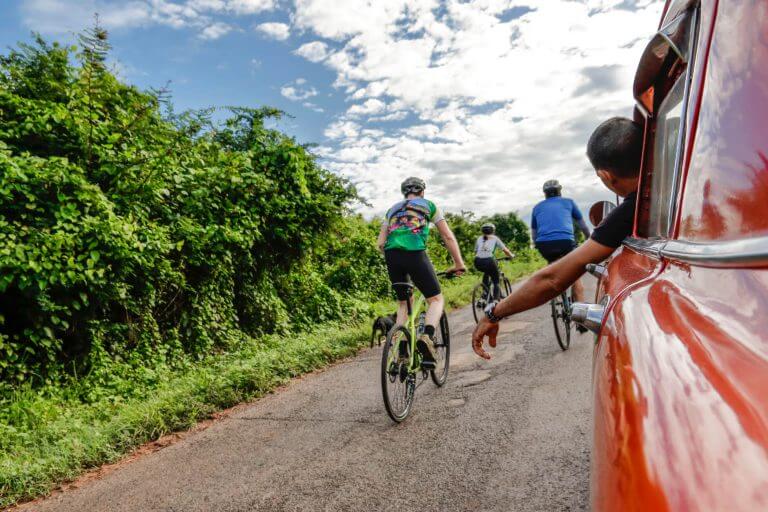
Active tours
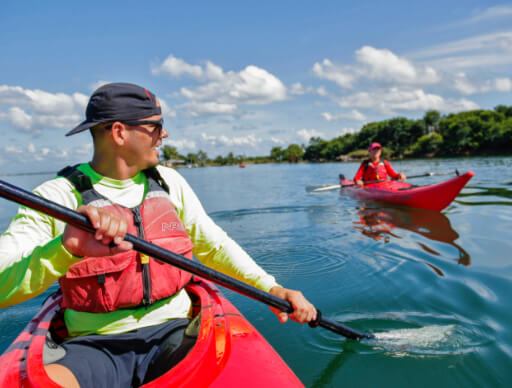
Cultural Cuba
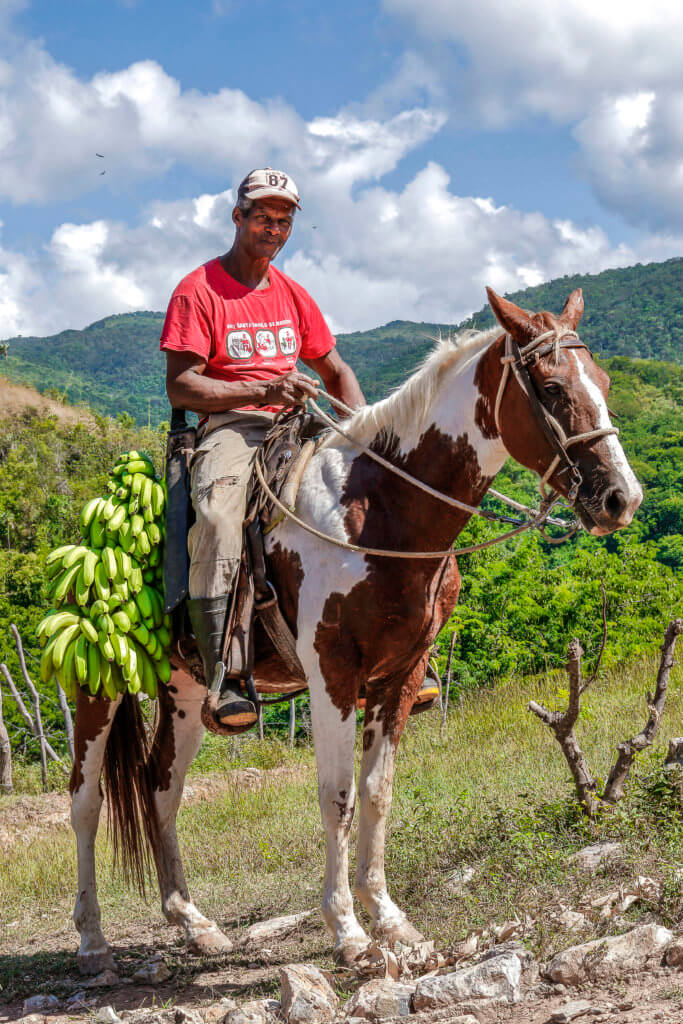
The Cubania experience
Cuba travel experts.
ABTA protected, we have 20+ years organising tours in Cuba. Experts in OFAC compliant tours for US travellers Travel to Cuba with peace of mind when you book one of our OFAC compliant tours
Sustainable Experiences
We champion responsible travel which protects Cuba’s rich biodiversity and sustains local community
24 Hours Support
English/Spanish speaking team available 24hrs during your holiday
Excellent Customer Service
Rating 5* on Google, we are here to help you prepare an epic holiday

In safe hands
We are Cubania Travel and we love what we do. We are the cycling and active travel experts in Cuba. We have an international standard bike workshop and an incredible team of trained cycling guides.
For the last 20 years, we have been providing exceptional and meaningful holidays, enriching the lives of active travellers and our community, and exposing them to a unique way of living by sharing the real Cuban experience.
We aim for excellence in everything we do – from the quality of our tours to the service we give and the experiences we offer. This is our purpose. It’s why we exist.
Why choose us
100% satisfield clients.
With a 5* rating on Google, Cubania has a track record of happy clients who have enjoyed sustainable experiences in Cuba. Reviews and testimonials from satisfied travellers reflect the company’s commitment to delivering exceptional journeys. Check out our Google reviews for yourself!
Safety and support
We look after your safety by providing expert guides, thorough risk assessments, and comprehensive orientation sessions. We offer 24/7 emergency support during your time in Cuba, maintain strong local partnerships, and provide travellers with well-maintained sports equipment. With Cubania, you’ll explore Cuba confidently, knowing you’re supported every step of the way.
Local expertise
More than 20 years of local expertise has made Cubania Travel the best agency for adventure and cultural tours in Cuba. Our deep-rooted local connections and insider knowledge guarantee authentic experiences, off-the-beaten-path discoveries, and seamless cultural immersion, making us the top choice for sustainable Cuban adventures.
Unique itineraries
We offer unique Cuba tours thanks to our profound local knowledge. We delve beyond tourist hotspots, unveiling hidden gems and show you Cuba’s unique culture by doing things the Cuban Way. With our deep-rooted connections and knowledge, we craft truly immersive adventures, ensuring each journey is a unique and unforgettable exploration of culture and nature.
Responsible travel
We champion responsible travel which protects Cuba’s rich biodiversity and sustains local communities by offering tours that are low in carbon footprint. In our tours, you’ll embrace human-powered travel (trekking, cycling, kayaking) and use only locally-owned accommodations and eateries. Our goal is to minimise environmental impact while maximising community support. Visiting protected natural areas underscores our commitment to preserving Cuba’s pristine landscapes, ensuring our journeys benefit local communities, travellers and the environment.
Small and Private groups
When you book with us, you can choose to join a small group of like-minded travellers, create your own private travel bubble or have a fully tailor-made trip. Whatever you choose, you’ll travel sustainably and experience Cuba, the Cuban way!
OFAC compliant tours for US travellers
Want to travel to Cuba from the US but overwhelmed by all the red tape? We hear you. The US Embargo on Cuba can make a trip to Cuba tricky for US travelers. But, with our support and a little planning, you can enjoy that epic Cuban adventure stress-free! We’ll help you understand the travel regulations set out by the US Treasury’s Office of Foreign Asset Control (OFAC) to ensure your trip is legal. View our ready-made OFAC compliant tours .


Cuba Tours for US Travelers
Are you a US citizen looking for a sustainable Cuba tour? View our OFAC (Office of Foreign Assets Control) compliant tours and get closer to the real Cuba!
Sustainable travel experiences
When it comes to the planet, we are committed to protecting it. We all emit too much carbon and we are on a mission to reduce our emissions and lower our carbon footprint year on year. We aren’t perfect but we are trying to be.
Need help planning your Cuba holiday? Get in touch with our friendly, international team of Cuba experts. Whether you are looking to join a group tour, create your own private group adventure or go bespoke, our sustainable holidays are packed with authentic experiences , flexible to suit your needs!
What our clients say
Connect with @cubaniatravel
Dive into the picturesque world of Cuba through the lens of Cubania on our Instagram feed. We curate the most enchanting moments from our trips, showcasing the stunning landscapes, cultural encounters, and the joy of our travelers.
Latest stories from Cuba
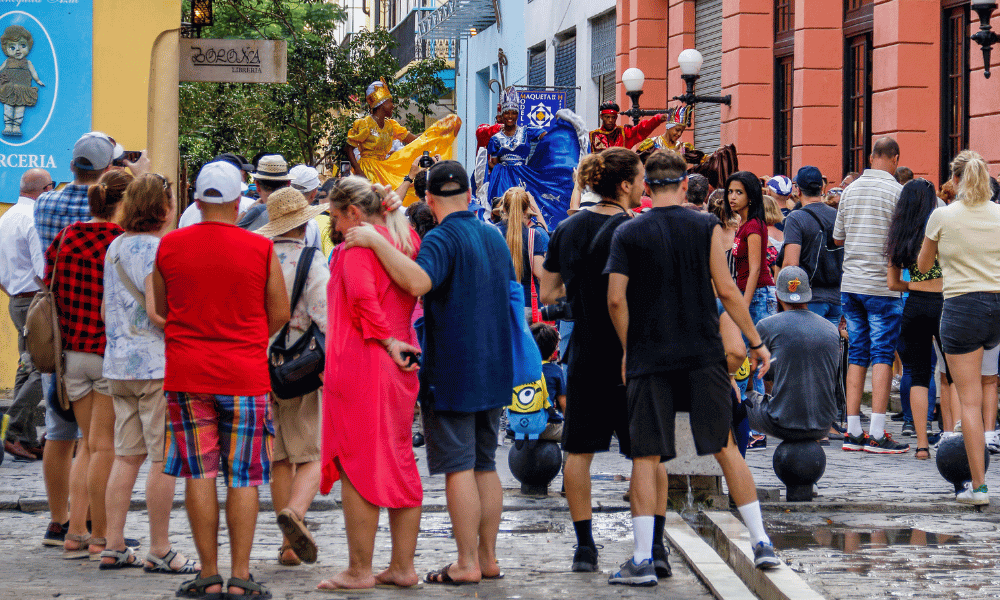
Is Cuba safe?
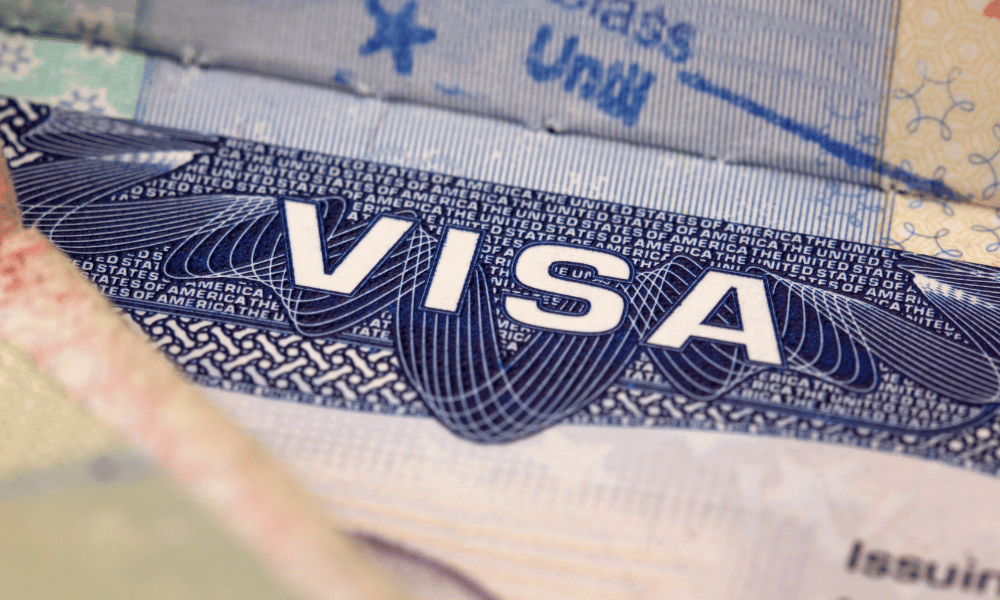
Can Europeans travel to the US if you have been to Cuba?
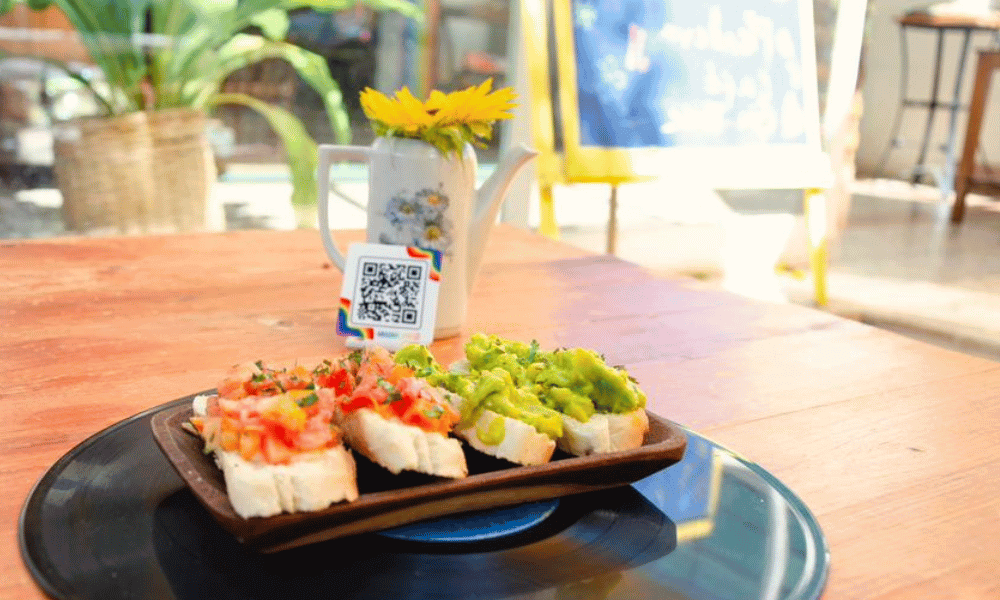
Top vegan places to eat in Havana
Free destination guide.

Subscribe to our newsletter to get useful information and up-to-date insights on the island. Get tips on: :
- Local language
- Cycling & Trekking
- Money & Costs
- Hotel & Facilities

Cuba is open! Book your trip now!
Free cuba travel guide.
Subscribe to our newsletter to get useful information and up-to-date insights on the island. Get tips on:
✔ Local language ✔ Cycling & Trekking ✔ Money & Costs ✔ Transport ✔ Hotel & Facilities
Business Channel B2C B2B Guides Journalists
Downloaded Destination Guide Bike Cuba Cubania Classic Cycle Cuba Insight Experience Havana Cuban Active Adventure Western Skyline Ride Cuba Completa Hip Havana Salsa Cubana Road Cycling Western & Central Cuba Bikepacking Cuba Kayaking in Cuba Run And Cycle In Cuba Havana Marathon Queer Cuba Havana Cycling Tour Western Cuba Trek Family Active Adventure Central Cuba Bike Ride Cuban Discovery Family Beach and Culture Central Cuba Trek Western And Central Cuba Trek Road Cycling Cuba Vuelta de Cuba
Consent I am happy for Cubania Travel to contact me occasionally via email
Click here to download Haga clic aquí para descargar
View Privacy Policy

- Fly to Cuba
- Internal flights
- Colonial hotels
- Collective Tours
- Collective transfers
- Private transfers
- Dance courses
- Sport a Cuba
- Watersports
- United States
- Tourist invitation / Family reunification
- Cuba entry visa
- Travel Health Insurance Policy
- Travel Cancellation Policy
- Guarantee policy
- Incoming Health Insurance Policy
- ALL DOCUMENTS / CERTIFICATES
- Certificates for Italians
- Wedding in Italy
- Italian citizenship
- Residence in Cuba
- Guide to Cuba
- Cuba Photos
- Videos of Cuba
- Useful links
- Conditions and penalties
- Privacy Policy
- Legal notices
- Collaborate with us
- Based in Cuba
Welcome to Cuba Latin Travel
Ciego de avila, isla de la juventud, pinar del rio, sancti spiritus, santiago de cuba, villa clara, get updates & more.
Thoughtful thoughts to your inbox
- Tel. +39 0332 773269
- Fax. +39 0332 770613
- The Climate in Cuba
- Customs and Travel Documents
- The suitcase for Cuba
- Phones & Internet
- Money in Cuba
- Tel. +53 5 277 2183
- Tel. +53 5 847 2646
- Tel. +53 7 836 9737
All published material is the property of AMIA TRAVEL SRL and / or their respective authors. The design, logo and illustrations are the property of AMIA TRAVEL SRL - Any reproduction is prohibited.

Register as
Join the journey: Click here to get our top tips for affordable travel!

How to Plan an Independent Trip to Cuba (6 Simple Steps)

As the door to travel to this lovely island in Latin America is now open to many Americans, I often hear get a lot of questions regarding how to plan an independent trip to Cuba. This is also known as travel under the “Support for the Cuban People” OFAC category.
In this post I’ll go over the basics for traveling to Cuba, such as travel document requirements (e.g., Visas), selecting the time of year to visit, finding a flight, selecting a place to stay, and general tips on what to expect when you’re there.
So if you’ve ever thought about heading to Cuba, this article is for you. While this article will be geared to those readers who are traveling from the U.S., it will include content relevant to any traveler to this country as well.
Note: This post is up-to-date for 2023, and includes the most recent travel regulations imposed by the US government.
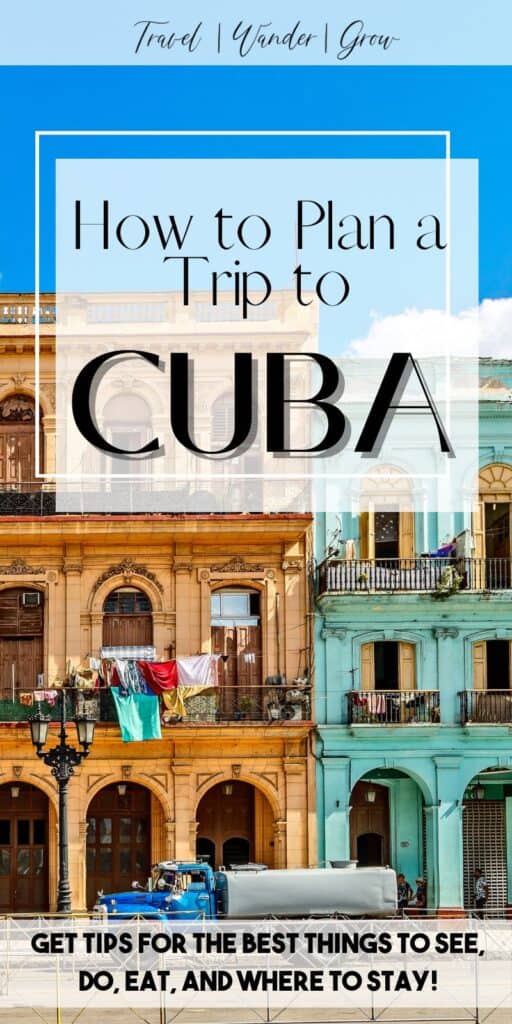
Table of Contents
1 | Plan an Independent Trip to Cuba | Decide When to Visit
Peak season.
High season for traveling to Cuba is from October through April . During this time you’ll experience the most pleasant weather, with less humidity and little rain as this is the dry season. This is also the time when you’ll experience the most tourists, as they’ll be looking for the pleasant weather as well.
The rainy season falls from May through September, but this does not mean that you’ll experience monsoon-type rain. I visited for a week in May, and we only experienced rain on one day, and it only lasted for about an hour. My personal preference is to visit during the end / beginning of the off-peak season. This allows you to avoid being there with many other tourists, but still miss the heavier rain periods.
Plan Cuba Like a pro!
Sign up below and get our free guide to planning the perfect trip to cuba.
Cuba is a complex place to plan travel for – to help with this, we’ve created this guide to make sure you don’t forget anything before you go!
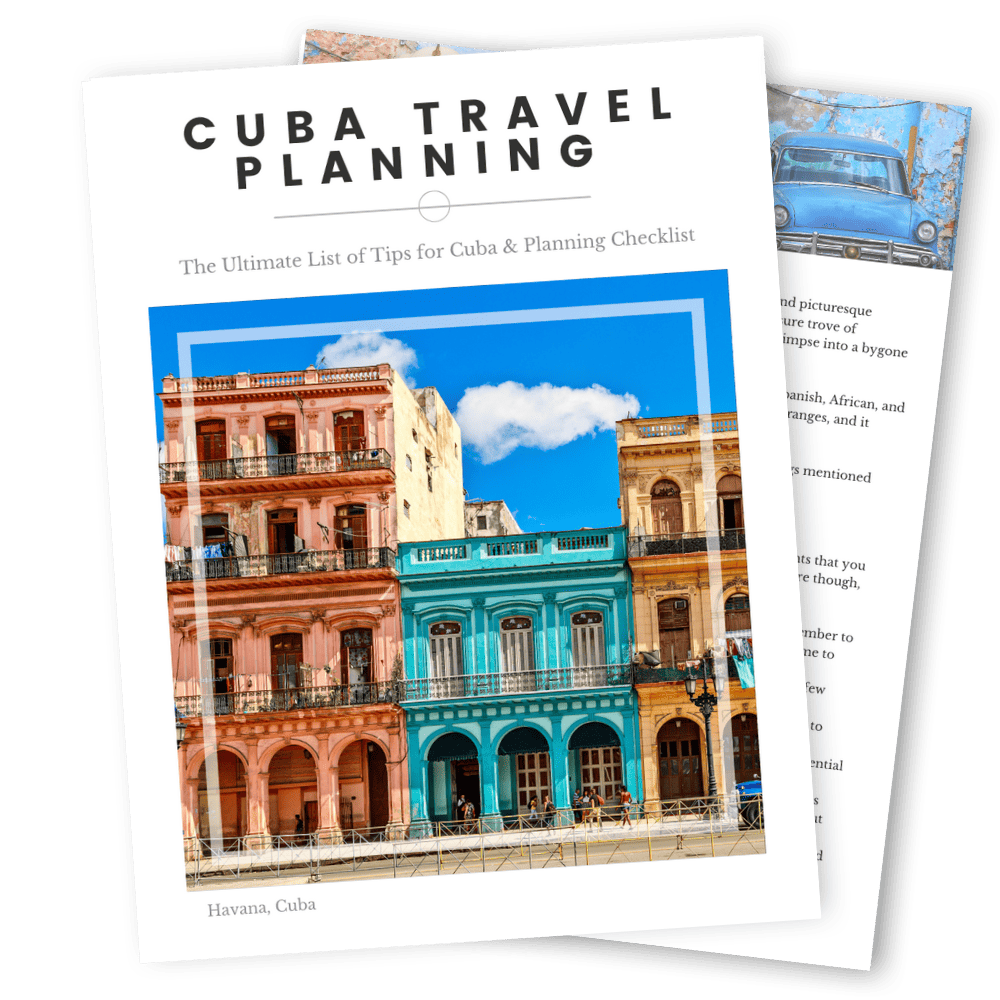
RELATED: Where to Eat in Havana | A Guide to Great Food!
2 | Identify Your Reason for Travel to Cuba
The 12 categories of authorized travel to cuba.
As an American traveling to Cuba, it is still technically illegal to travel to the country as a tourist. Given this fact, you will need a special license in order to get into the country. There are currently 12 categories of authorized travel to Cuba from the United States that come from the Office of Foreign Assests Control (OFAC):
- Visiting Family : Visiting close relatives who are nationals of Cuba.
- Official business of the U.S. government , foreign governments, and certain intergovernmental organizations.
- Journalistic Activities : Engaging in journalistic work for professional reporting.
- Professional Research : Conducting research or attending professional meetings related to one’s profession.
- Educational Activities : Participating in educational programs or conducting academic research.
- Religious Activities : Engaging in religious activities and attending religious services in Cuba.
- Support for the Cuban People: Engaging in activities that support the Cuban people, such as interacting with locals, supporting private businesses, and participating in community projects.
- Humanitarian Projects : Undertaking projects that benefit the Cuban people and contribute to their well-being.
- Public performances , clinics, workshops, athletic or other competitions and exhibitions
- Activities of private foundations, research or educational institutes
- Exportation, importation, or transmission of information or information materials : Sending information or materials to Cuba that promote communication and free flow of information.
- Certain export transactions that may be considered for authorization under existing regulations and guidelines.
You are able to self-qualify for any of the 12 travel categories listed here, so give some thought to the one that applies best to the purpose of your travel.
Assuming that you are not traveling to visit family or conduct business, you are likely going to place your travel under the “Support for the Cuban People” option. (You can find more information on current state travel restrictions on the US Embassy in Cuba website.)
For independent travel to Cuba, you have two primary options:
- Support for the Cuban People: This category still permits independent travel, you just have to follow the guidelines that have been set.
- Visiting Family : This self-explanatory category will only apply to those who have family members to visit in Cuba
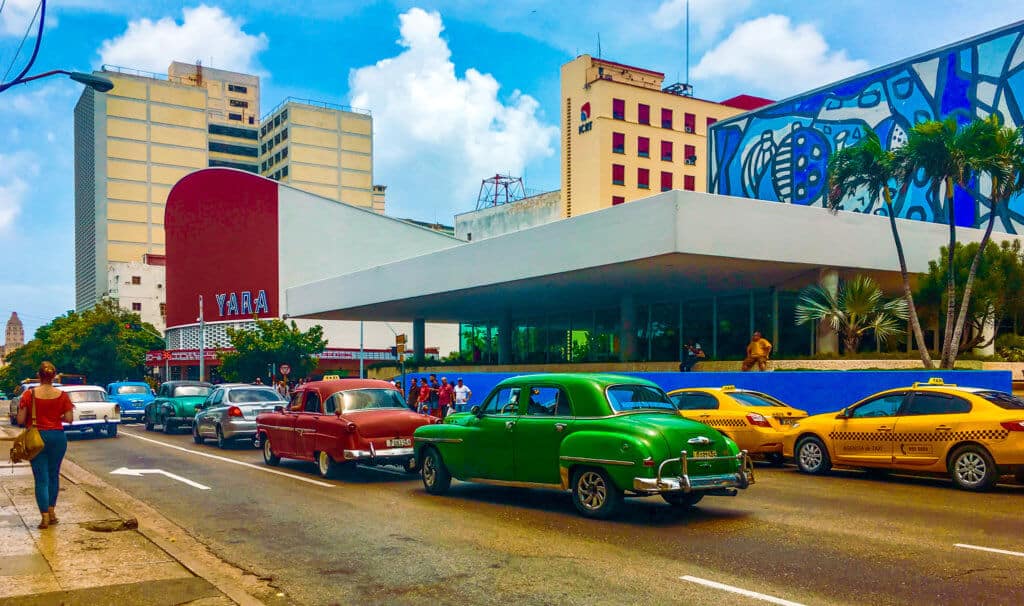
Guidelines for Travel Under Support for the Cuban People
As made clear in the title, your activities should help strengthen society in Cuba. This includes activities such as:
- Supporting independently run markets, museums, and other types of businesses
- Getting to know the people that you encounter on the street / discussing local society with them
- Taking Spanish language, music, or dancing classes
You must all avoid GAESA-owned (military-owned businesses). See a list of all the organizations that you can not interact with here .
Additionally, it’s a good idea to keep track of all your receipts while you travel. It’s an even better idea to have an itinerary put together that you can pull up in the event that you are questioned on your trip.
Note, it is unlikely that you’ll get any questions, but it’s always great to be prepared!
3 | Prepare to Travel to Cuba
Get your cuba tourist card (visa).
All travelers to Cuba are required to obtain a visa before entry, and there are three ways that you may do this:
- Cuban Consulate or Embassy : You could obtain the Cuban Tourist Card directly from the Cuban consulate or embassy in your country of residence. This option is available in many countries where Cuba maintains diplomatic representation.
- Airlines : Purchase the visa at the gate in the airport before the last leg of your flight to Cuba.* The cost of the visa will vary by the airline that you take, but you can expect to spend $50 for the visa plus a processing fee, which is about $25 – $35. This is probably the easiest method, and the option that I selected for my flight to Cuba.
- Authorized Travel Agencies : Purchase the visa from a travel agency that is focused on travel in Cuba or dedicated websites such as cubavisaservices.com .
*Note that the exact cost and method of receiving the information does vary by airline. Remember to check with your airline on the appropriate procedures as soon as you book your flight!
The availability and procedures for obtaining the Cuban Tourist Card might vary depending on your country of residence and the specific travel regulations in place at the time of your inquiry. Also, due to potential changes in regulations or travel policies, it is crucial to check with the Cuban consulate or embassy or your travel provider for the most up-to-date information on purchasing the Cuban Tourist Card.
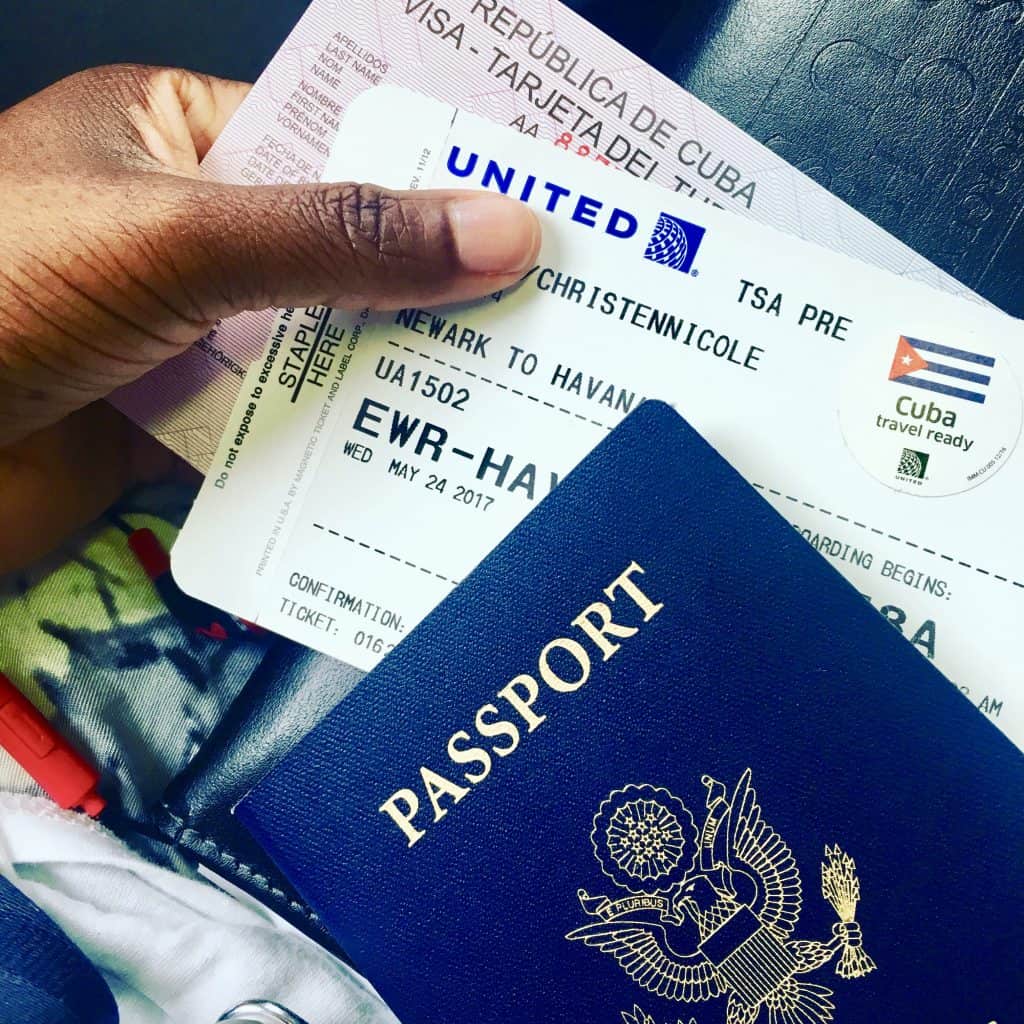
Book Your Flights
You can now book direct flights from many major cities in the US, such as NYC, Miami, Atlanta, Charlotte, and Tampa. Additionally, most major airline carriers fly into Havana, including:
- American Airlines
- Alaska Airlines
- United Airlines
- and more!
To find cheap flights, check sites such as google flights , skyscanner and m omundo to compare prices and get the best deal.
Plan Additional Transportation
Now, I would typically say “book” here, but with Cuba it is a little challenging to book internal transportation in advance (unless you are booking a flight).
Think through all the cities you plan to visit in Cuba and determine if it’s best to travel by bus, train, taxi, or air, and research on the best way to book it. I like using the website Rome2Rio to figure out how to travel to the next destination. If you are planning to travel from Havana to Varadero , I already have a guide for you, so check it out!
4 | Determine Where to Stay
You have several options for stay in Cuba. When traveling most think of staying in a hotel in order to get the most amenities, but I highly recommend staying in one of the many casas particulares while there. Cuban Casas Particulares are private homes or bed-and-breakfast accommodations offered by local families in Cuba. They provide an alternative to traditional hotels and are known for offering a more authentic and intimate experience of Cuban life.
Visitors can rent a room or an entire house, and the experience often includes home-cooked meals and the opportunity to interact with local families. Casas Particulares are regulated by the Cuban government, and they have become a popular choice for tourists seeking a more personalized and budget-friendly travel experience in the country
Also, due to new restrictions posed on travel to Cuba by the current administration, there are now many restrictions for hotels that Americans may stay in. You can find the complete listing here .
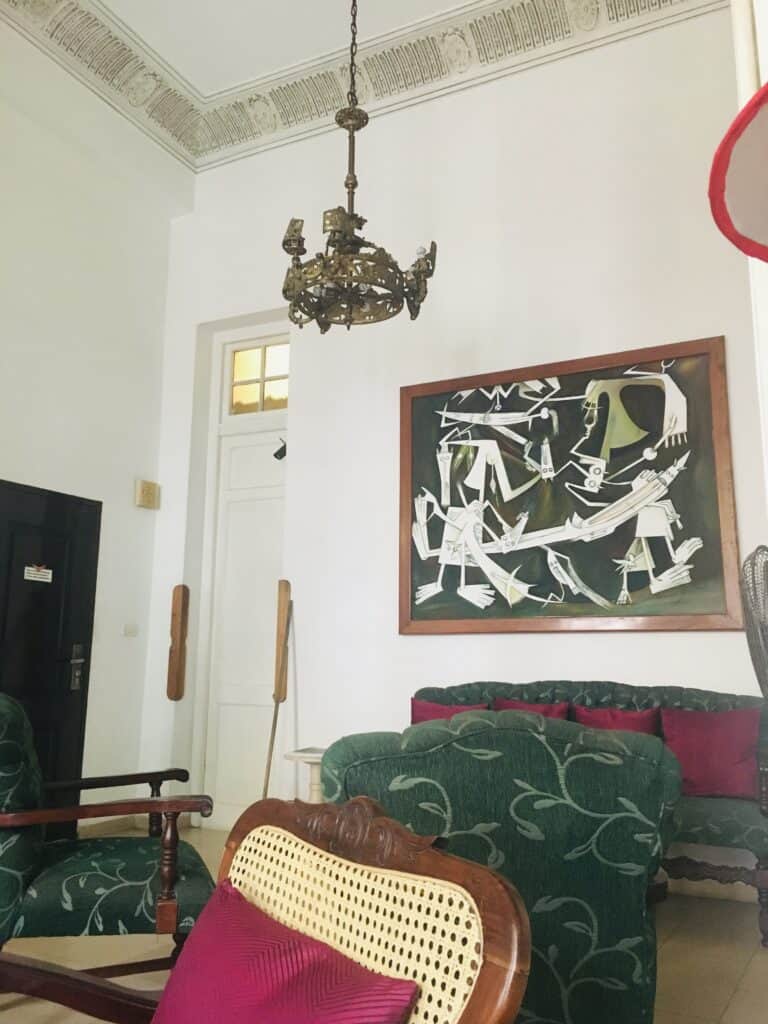
The benefits of staying at a Casa Particular is that you get some insight into what daily life in Cuba is like. When I visited Cuba last May with my friends, we stayed in this Casa Particular in Central Havana and were very well taken care of. We had the option to get breakfast every morning and were also able to coordinate in-room massages and excursions with the owner of the house. We left feeling like we were part of the family!
You can book you casa via Airbnb , or by using one of the many other sites that are available. We reserved ours from CubaBookingRoom.com , and here are a few additional options below:
- Havanacasaparticular.com
- Cuba-junky.com
- Cubacasas.net
The benefit of booking via Airbnb is that you can pay in advance. I will note that they typically are a bit more expensive, on average, than some of the other listed sites. But if you are interested in a private space, rather than a shared house, you are more likely to find those in Airbnb. It’s all a matter of preference.
RELATED: The Top 10 Things to Do in Havana
5 | Build Your Itinerary
As I mentioned in Step 2, it’s a great idea to have an itinerary put together in case you get any questions on your trip when you return. It’s also a great idea to have a plan for your trip, as internet is still limited in Cuba so any planning will be mostly done by word of mouth once you arrive. My Cuba itinerary will provides a detailed look on how to spend a week in Cuba.
There are so many unique experiences that you can have while in Cuba. During my visit to Cuba, we spent time learning how to salsa, touring Havana, and visiting the beach. We leveraged the Havana Tour Company site and Cuba-Excursions.com to find and book our activities. To start to build your itinerary, here are a few experiences I highly recommend you consider for your trip:
- Havana : I recommend spending a few days in Havana, the capital of Cuba. This city is renowned for its rich cultural heritage and vibrant street life. The historic Old Havana district offers Spanish colonial architecture and is a UNESCO World Heritage site, providing a glimpse into the country’s storied past. Tourists can explore local attractions like the Malecón promenade, iconic museums, and classic car tours. From authentic Cuban cuisine to lively music and dance venues, Havana presents a diverse and engaging experience for travelers.
- Las Terrazas: This area is a small community and nature reserve in the Sierra del Rosario mountains in Cuba. Established as a UNESCO Biosphere Reserve, it’s renowned for its lush landscapes, abundant birdlife, and sustainable development practices. Visitors to Las Terrazas can explore the beautiful terraced gardens, hike trails through tropical forests, visit the local art studios, and enjoy the serene lakes and waterfalls. The area serves as both an ecotourism destination and a model of environmentally responsible living, making it a unique and refreshing experience for travelers.
- Varadero : I still consider the white sand beaches in Varadero some of the best that I have ever seen. This area has several all inclusive resorts and private houses as well, many right on the beach. If you are looking for a good time and some peace and tranquility, this should be at the top of your list.
For some additional inspiration, check out my post on the Top 10 Things to Do in Havana . Also, reach out to family / friends who have visited Cuba before for some recommendations. We crowdsourced for our trip, and got some awesome tips because of it!
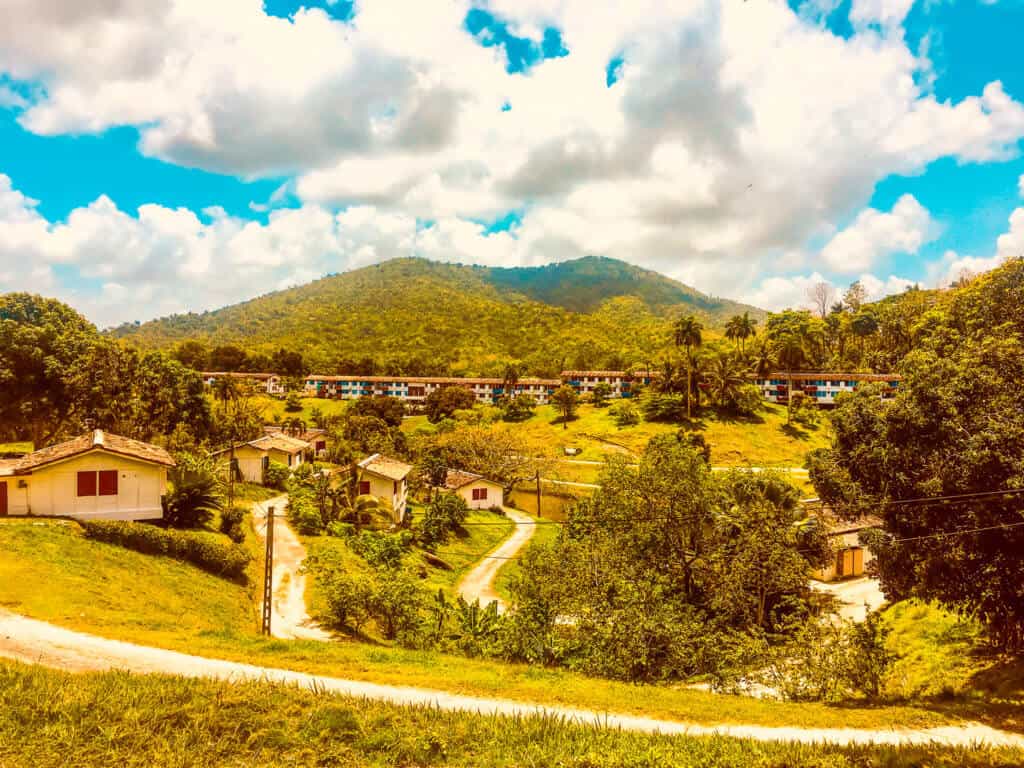
If you like to be a bit more spontaneous with the activities that you choose, it is a good idea to reach out to the owner of your Casa Particular or hotel concierge to get help in booking excursions. Many Cubans who work in the tourist sector are well-connected and more than happy to help you with this.
To keep things organized, I like to use Wanderlog . What’s great about this tool is that it includes both maps and suggested activities, so it makes planning a trip very easy. For more tips, head to my post on How to Plan a Trip .
6 | Planning for Daily Life in Cuba
One important factor to consider when planning for your trip is the currency in Cuba . As an American, you are not able to pull out money from ATMs once you arrive in the country. You are not able to use American credit cards or debit cards for purchases neither. For these reasons, it is necessary to pull out all the money that you’ll need for your entire trip and bring it with you.
My friends and I purchased as much as we could before arriving (e.g., activities), and then set a budget for each day on what to spend. We then tacked on enough for an additional day in case of emergencies. We found that budgeting $100/day was enough, but that amount will vary by how you choose to spend your time in Cuba.
Note, in the past, there were two currencies. The Cuban Peso (CUP) and the Cuban Convertible Peso (CUC). The latter was pegged to the US dollar, and primarily used by tourists. However, in 2021, the CUC was phased out completely. As of summer 2023, $1 ~ 24 CUP. Click here for the latest exchange rate.
The Language
Now of course, the language in Cuba is Spanish. I recommend that you learn at least some basic phrases in order to navigate daily life, as English is not very widely spoken. For a complete listing of basic Spanish phrases, check out my post on Spanish Phrases for Travel .
Planning your Meals
There is a bit of a rumor that there is no good food in Havana. There is plenty of good Cuban food, you just have to do your research! Check out this post to learn more of my tips on where to eat in Ha vana . In this guide, I provide many tips on which local restaurants to try while there.
Getting Around Havana
Havana is a pretty walkable city, especially if you stay in Old Havana. This is the most tourist-friendly part of the city. If you stay a bit further out, it is relatively easy to find a cab.
We stayed in Central Havana and used the latter option quite often. When hailing taxis, be sure to negotiate the price up front. Most taxis will try to raise the fare a bit if they recognize that you are not local.
RELATED: How to Go from Havana to Varadero
Frequently Asked Questions about Planning a Trip to Cuba
To plan a trip to Cuba, consult the latest travel regulations for both your home country and Cuba, book flights through airlines offering service to Cuba or via third countries if necessary, and secure accommodations and any required visas or tourist cards in advance.
The cost to go to Cuba varies based on factors like flights, accommodations, meals, and activities; travelers from the U.S. might expect to spend anywhere from $1,000 to $4,000 or more per person for a week-long trip, depending on the level of luxury and planned activities.
A trip of 4 to 7 days in Cuba can allow you to see key highlights like Havana, Trinidad, and Varadero, while a longer stay of 10 to 14 days could provide a more in-depth exploration of the country.
The best way to travel to Cuba generally involves booking a direct flight from a country that has established air links with Cuba or connecting through a third country where restrictions may be less stringent; additionally, ensuring compliance with all travel regulations and obtaining any necessary visas or tourist cards is essential.
How to Plan an Independent Trip to Cuba | Final Thoughts
As you can see, there are a lot of things to keep in mind when planning an independent trip to Cuba. But with this post (and the downloadable checklist below), you should not have any trouble!
The Best Tips for Planning a Trip to Cuba
Here are a few key tips to keep in mind as you prepare for your trip to Cuba:
- Know the Entry Requirements : Travelers to Cuba must understand the entry requirements. They should apply for the appropriate visa or tourist card and keep an eye on the latest regulations that may affect their travel plans.
- Prepare for Currency Needs : Travelers need to carry enough cash since ATMs might be scarce or incompatible with foreign cards. They should convert their money to the Cuban Peso (CUP) upon arrival, as this is the currency used locally.
- Stay Connected Thoughtfully : Internet access in Cuba can be limited, so travelers need to plan accordingly. They should purchase Wi-Fi cards from official outlets and be mindful of where and when they can connect online.
- Explore Local Accommodations : For a more authentic experience, travelers might consider staying in Casas Particulares. These local homestays offer a unique glimpse into Cuban life and can make a trip more memorable.
- Respect Local Customs and Regulations : Travelers must be aware of and adhere to local laws, customs, and regulations. Following rules around photography or understanding local etiquette will help them enjoy a smooth and respectful visit to Cuba.
Cuba has a special place in my heart – I’ve never felt more welcomed by strangers in any other place I’ve visited. I highly encourage you to interact with the locals as much as possible when you visit Cuba. Allot some free time in your schedule just to do this. I’m certain you’ll feel as enchanted as I do with this island if you do.
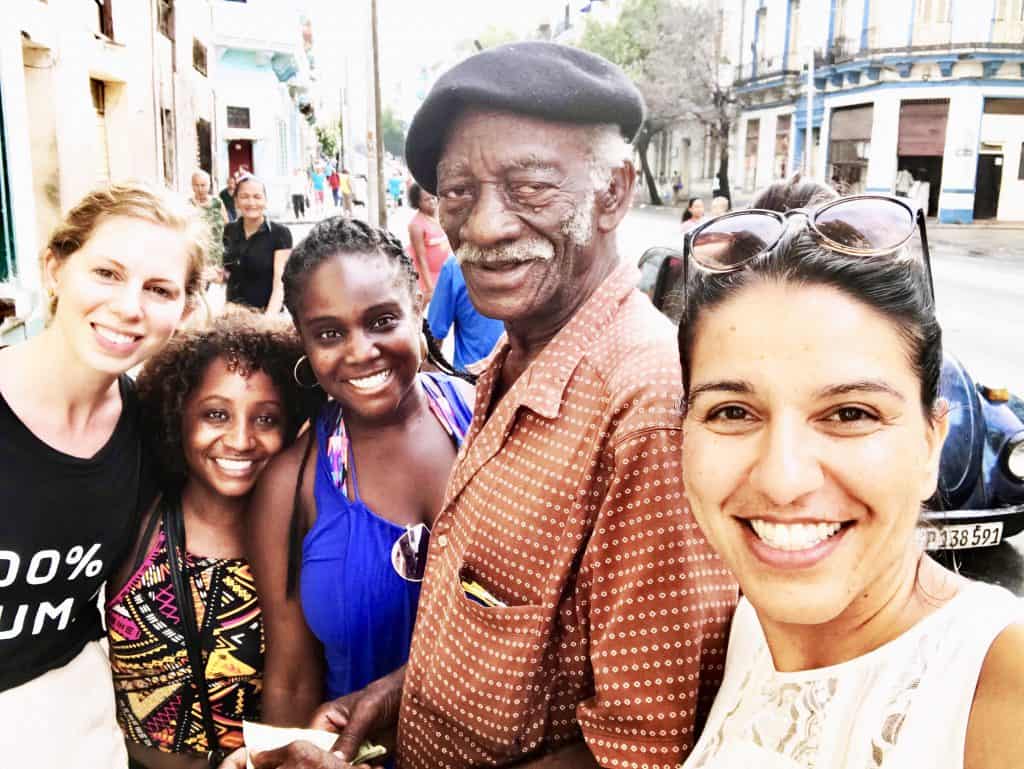
For those of you who have visited Cuba before, what tips do you have? Share them in the comments below!
Related Posts on Cuba:
The ultimate 7-day cuba itinerary, 5 ways to travel from havana to varadero (includes varadero tips), the top 10 things to do in havana, cuba, where to eat in havana | a vacationer’s guide to great food.
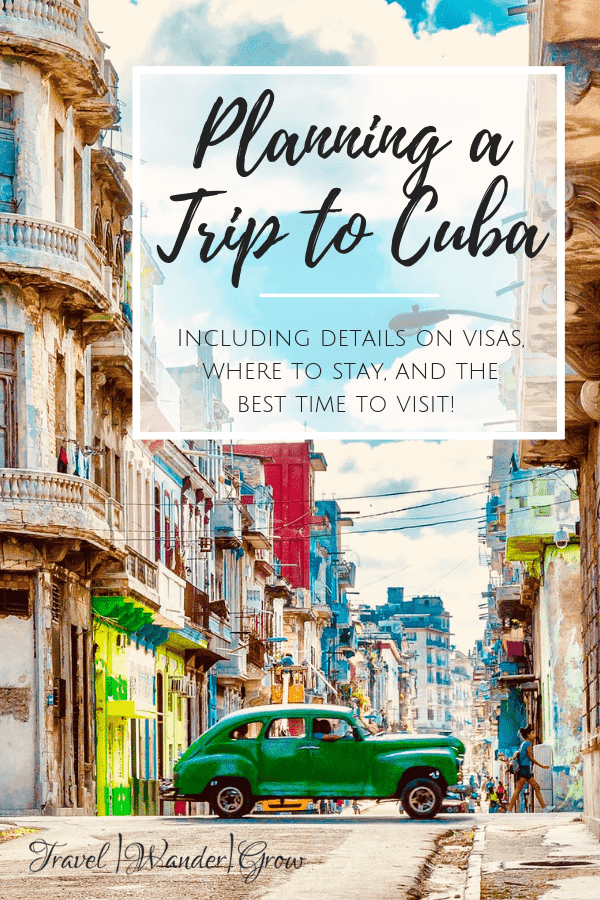
Christen Thomas is the founder of TravelWanderGrow, established in 2018. She has lived abroad and traveled extensively to over 30 countries. In addition, she is a certified Travel Advisor and is an expert in planning trips focused on city history and culture. As a frequent traveler, she also shares tips on how to prepare to travel well and how to save money while doing so.
Hey! Awesome website and very informative post. What would be an ideal amount of days to cover most important tourism spots in Cuba? Thank you!
Hi Tasha! I think the ideal amount of days for just Havana is 4-5, depending on how you like to pace yourself. There are lots of activities to do in the city, and I’ll be uploading a post just on this soon!
I appreciate you bringing up Cuba as a vacation destination. I will have to give this more thought as I was unaware that we could travel there.
Why can’t you withdraw money out of an ATM there? What happens if you have an emergency or get your money stolen? Surly there has to be a solution to major problems.
Hi Rick – Glad to hear you’re considering Cuba as a travel destination! In regards to the money situation there, there are only a few workarounds: you either have to have a bank card from a non-US bank or you may use a credit card from one Florida-based bank called Stonegate for purchases there. You are absolutely right that it could be a major problem, so careful planning is so key when preparing to go to there.
Hi, Fellow travel blogger here. Nice to meet you 🙂 Great post, Cuba is on my radar, but it’s so expensive to travel within the Caribbean. So hopefully i make it there a little later in the year. I also hope that we can work together one day 🙂 Thanks for sharing.
Hi there! I have a bit of good news for you – Cuba is relatively cheap compared to the rest of the Carribean when it comes to prices for flights and the cost of your stay :). I hope you get to visit soon too – it’s one of my favorites! And yes, it’s always great to meet a fellow travel blogger – I’d love to collaborate one day!
Great post…Really like the pictures of Cuba…It gives me a feel for what the country is like. Anyway, after reading some of your posts, really thinking about planning a visit…
That’s great to hear! Let me know if you have questions once you start planning :).
Leave a Reply Cancel reply
Your email address will not be published. Required fields are marked *
Official websites use .gov
A .gov website belongs to an official government organization in the United States.
Secure .gov websites use HTTPS
A lock ( ) or https:// means you've safely connected to the .gov website. Share sensitive information only on official, secure websites.
Increased Risk of Dengue Virus Infections in the United States

Distributed via the CDC Health Alert Network June 25, 2024, 2:30 PM ET CDCHAN-00511
Summary The Centers for Disease Control and Prevention (CDC) is issuing this Health Alert Network (HAN) Health Advisory to notify healthcare providers, public health authorities and the public of an increased risk of dengue virus (DENV) infections in the United States in 2024. Global incidence of dengue in 2024 has been the highest on record for this calendar year; many countries are reporting higher-than-usual dengue case numbers . In 2024, countries in the Americas have reported a record-breaking number of dengue cases, exceeding the highest number ever recorded in a single year. From January 1 – June 24, 2024, countries in the Americas reported more than 9.7 million dengue cases, twice as many as in all of 2023 (4.6 million cases). In the United States, Puerto Rico has declared a public health emergency (1,498 cases) and a higher-than-expected number of dengue cases have been identified among U.S. travelers (745 cases) from January 1 – June 24, 2024. In the setting of increased global and domestic incidence of dengue, healthcare providers should take steps including:
- Have increased suspicion of dengue among people with fever who have been in areas with frequent or continuous dengue transmission within 14 days before illness onset,
- Order appropriate diagnostic tests for acute DENV infection: reverse transcription polymerase chain reaction [RT-PCR] and IgM antibody tests, or non-structural protein 1 [NS1] antigen tests and IgM antibody tests,
- Ensure timely reporting of dengue cases to public health authorities, and
- Promote mosquito bite prevention measures among people living in or visiting areas with frequent or continuous dengue transmission.
Background Dengue is the most common arboviral disease globally. It is caused by four distinct but closely related dengue viruses (DENV-1, -2, -3, and -4). DENVs are transmitted through bites of infected Aedes species mosquito vectors. Infection with one DENV generally induces life-long protection against infection from that specific DENV but only protects against other DENVs for several months to years. Dengue is a nationally notifiable disease in the United States. Six U.S. territories and freely associated states are classified as areas with frequent or continuous dengue transmission : Puerto Rico, American Samoa, the U.S. Virgin Islands, the Federated States of Micronesia, the Republic of Marshall Islands, and the Republic of Palau. In the rest of the United States, local transmission of DENV has been limited, with sporadic cases or small outbreaks in Florida, Hawaii, and Texas. However, confirmed local DENV transmission has also been reported by Arizona and California over the past two years.
Approximately one in four DENV infections are symptomatic and can be mild or severe. Symptoms begin after an incubation period of 5–7 days (range 3–10 days) and present as fever accompanied by non-specific signs and symptoms such as nausea, vomiting, rash, muscle aches, joint pain, bone pain, pain behind the eyes, headache, or low white blood cell counts. Warning signs are specific clinical findings that predict progression to severe disease. Warning signs include abdominal pain or tenderness, persistent vomiting, clinical fluid accumulation (e.g., ascites, pleural effusion), mucosal bleeding, lethargy or restlessness, progressive increase of hematocrit, or liver enlargement >2cm. Severe disease, with associated severe bleeding, shock or respiratory distress caused by plasma leakage, or end-organ impairment, develops in 1 in 20 people with symptomatic dengue. Infants aged ≤1 year, pregnant people, adults aged ≥65 years, and people with certain medical conditions are at increased risk of severe dengue. Although a second DENV infection (i.e., with a different DENV from the first infection) carries a higher risk of severe disease than a first, third, or fourth infection, any infection can lead to severe disease.
Patients with symptoms compatible with dengue can be tested with both molecular and serologic diagnostic tests. All patients with suspected DENV infection should be tested with RT-PCR (i.e., a nucleic acid amplification test (NAAT)) or a NS1 antigen test, and also with IgM antibody test to confirm DENV infection. These tests can be considered regardless of the symptom onset date, although the test sensitivity of RT-PCR and NS1 antigen tests decrease after the first 7 days. IgG detection by enzyme-linked immunosorbent assay (ELISA) in a single serum sample should not be used to diagnose a patient with acute dengue because it does not distinguish between current and previous DENV infection. U.S. Food and Drug Administration (FDA)-approved testing is available at public health laboratories and some commercial laboratories. State, tribal, territorial, and local health departments, and CDC can offer additional testing guidance.
There are no antiviral medications approved to treat dengue. Treatment is supportive and requires careful volume management. Appropriate triage, management, and follow-up remain the most effective interventions to reduce dengue morbidity and mortality. Expectant management of patients at high risk for severe disease and rapid initiation of a standardized fluid replacement strategy recommended by the World Health Organization (WHO) can decrease mortality from 13% to <1%. In June 2021, the Advisory Committee of Immunization Practices recommended a dengue vaccine, Dengvaxia , for children aged 9–16 years with laboratory confirmation of previous DENV infection and living in areas with frequent or continuous dengue transmission such as Puerto Rico. While the vaccine is considered safe and effective, the manufacturer (Sanofi Pasteur, Inc., Paris France) has discontinued production citing a lack of demand. Vaccine administration will continue in Puerto Rico until available doses expire in 2026.There are no vaccines recommended for travelers, adults, or persons without a previous DENV infection.
Dengue cases resurged globally after the COVID-19 pandemic. In 2023, more than 4.6 million cases and 4000 deaths were reported in the Americas region. As of June 24, 2024, more than 9.7 million dengue cases have been reported in the Americas, twice as many as in all of 2023 (4.6 million cases). Dengue transmission peaks during the warmer and wetter months in many tropical and subtropical regions. Dengue cases are likely to increase as global temperatures increase. Higher temperatures can expand the range of the mosquitoes that spread dengue, as well as affect other factors that facilitate virus transmission like faster viral amplification in the mosquito, increased vector survival, and changes in reproduction and biting rates. U.S. summer travel often overlaps with the months of increased dengue activity in many countries. Epidemics in the Americas region increase travel-associated cases and limited local transmission in the continental United States. A higher-than-expected number of dengue cases (total of 2,241 cases, including 1,498 in Puerto Rico) were reported in the United States from January 1 – June 24, 2024. Public health authorities in Puerto Rico declared a public health emergency in March 2024 because of the high number of cases reported during the low dengue season. Healthcare providers should be prepared to recognize, diagnose, manage, and report dengue cases to public health authorities; public health partners should investigate cases and disseminate clear prevention messages to the public. The CDC is actively implementing several strategies to address the increase in cases of dengue in the United States, including:
- Launching a program-led emergency response, which was activated on April 8, 2024.
- Providing regularly scheduled monthly situational updates on dengue to partners, stakeholders, and jurisdictions.
- Expanding laboratory capacity to improve laboratory testing approaches.
- Collaborating with State, Tribal, Local, and Territorial Health Departments to strengthen dengue surveillance and recommend prevention strategies.
- Educating the public on dengue prevention.
Recommendations for Healthcare Providers
- Maintain a high suspicion for dengue among patients with fever and recent travel (within 14 days before illness onset) to areas with frequent or continuous dengue transmission .
- Consider locally acquired dengue among patients who have signs and symptoms highly compatible with dengue (e.g., fever, thrombocytopenia, leukopenia, aches, pains, rash) in areas with competent mosquito vectors .
- Order appropriate FDA-approved dengue tests (RT-PCR and IgM antibody tests, or NS1 and IgM antibody tests), and do not delay treatment waiting for test results to confirm dengue.
- Know the warning signs for progression to severe dengue, which include abdominal pain or tenderness, persistent vomiting, clinical fluid accumulation, mucosal bleeding, lethargy or restlessness, and liver enlargement.
- For people with suspected dengue who do not have warning signs and are not part of a population at high risk for severe dengue, consider outpatient management with close follow-up.
- Teach patients about the warning signs that may appear as their fever starts to decline and instruct them to seek care urgently if they experience any warning signs.
- Recognize the critical phase of dengue. The critical phase begins when fever starts to decline and lasts for 24–48 hours. During this phase, some patients require close monitoring and may deteriorate within hours without appropriate intravenous (IV) fluid management.
- Hospitalize patients with severe dengue or any warning sign of progression to severe dengue and follow CDC/WHO protocols for IV fluid management .
- Follow local guidelines to report dengue cases to state, tribal, local, or territorial health departments.
Recommendations for State, Tribal, Local, and Territorial Health Departments
- Use FDA-approved dengue tests. Ensure access to dengue testing for all patients with suspected dengue.
- Remind clinicians of the high risk of dengue among patients with fever who have been in areas with frequent or continuous dengue transmission .
- Remind clinicians that local transmission can occur in areas with competent vectors and to test patients with compatible illnesses even without a history of having been in an area with dengue.
- Inform healthcare providers and the public when locally acquired and travel-associated dengue cases are detected in the area.
- Report dengue cases to CDC via ArboNET , the national arboviral surveillance system managed by CDC and state health departments.
- Take the lead in investigating dengue cases and outbreaks.
- Consider targeted outreach about increasing dengue risk to healthcare providers more likely to identify dengue cases (i.e., travel medicine clinics, infectious disease physicians, or healthcare systems serving highly mobile populations such as migrant and border health clinics, and clinics with frequent travelers to areas with frequent or continuous dengue transmission) and messaging to populations at higher risk for dengue.
Recommendations for the Public
- Use Environmental Protection Agency-approved repellents during travel to and after returning from areas with frequent or continuous dengue transmission.
- Wear loose-fitting, long-sleeved pants and shirts.
- Use air conditioning and window screens when possible, to lower risk for mosquito bites indoors.
- Dump and drain containers that hold water to reduce mosquito egg-laying sites in your home and neighborhood.
- Seek medical care if you have a fever or have dengue symptoms and live in or traveled to an area with dengue outbreaks .
- If you plan international travel to a an area with frequent or continuous dengue transmission , protect yourself from mosquito bites during and after your trip.
For More Information
Healthcare Providers
- Clinical Testing Guidance for Dengue | Dengue | CDC
- Guidelines for Classifying Dengue | Dengue | CDC
- Clinical Features of Dengue | Dengue | CDC
- Dengue Case Management Pocket Guide | CDC
- Dengue During Pregnancy | Dengue | CDC
- Dengue Vaccine | Dengue | CDC
- Dengvaxia: What Healthcare Professionals Need to Know | Dengue | CDC
- Dengue | CDC Yellow Book 2024
- Dengue Clinical Management Course | Dengue | CDC
- Webinar: What Clinicians Need to Know about Dengue in the United States | CDC
Health Departments and Public Health Professionals
- Data and Statistics on Dengue in the United States | Dengue | CDC
- What You Can Do to Control Mosquitoes During an Outbreak | Mosquitoes | CDC
- ArboNET | Mosquitoes | CDC
- Dengue case investigation report | CDC
- Dengue Print Resources | Dengue | CDC
- Communication Resources | Mosquitoes | CDC
- Submitting Specimens for Dengue Virus Tests | Vector-Borne Diseases | CDC
- Preventing Dengue | Dengue | CDC
- Caring for a Family Member with Dengue | CDC
- Mosquito Control at Home | Mosquitoes | CDC
- Get Rid of Mosquitos at Home | CDC
- Your Infant has Dengue | CDC
- Areas with Risk of Dengue | Dengue | CDC
- Travel Health Notices | Travelers’ Health | CDC
- Find a Clinic | Travelers’ Health | CDC
- Pan American Health Organization. Epidemiological Update Increase in dengue cases in the Region of the Americas. https://www.paho.org/en/documents/epidemiological-update-increase-dengue-cases-region-americas-18-june-2024
- Wong JM, Adams LE, Durbin AP, et al. Dengue: a growing problem with new interventions. Pediatrics . 2022;149(6):e2021055522. DOI: 10.1542/peds.2021-055522
- Paz-Bailey G, Adams L, Wong JM, et al. Dengue vaccine: recommendations of the Advisory Committee on Immunization Practices, United States, 2021. MMWR Recommendations and Reports . 2021;70(6):1–16. DOI: 10.15585/mmwr.rr7006a1 .
- World Health Organization. Disease Outbreak News; Dengue – Global situation. May 30, 2024. https://www.who.int/emergencies/disease-outbreak-news/item/2024-DON518
The Centers for Disease Control and Prevention (CDC) protects people’s health and safety by preventing and controlling diseases and injuries; enhances health decisions by providing credible information on critical health issues; and promotes healthy living through strong partnerships with local, national and international organizations.
Department of Health and Human Services
Han message types.
- Health Alert: Conveys the highest level of importance about a public health incident.
- Health Advisory: Provides important information about a public health incident.
- Health Update: Provides updated information about a public health incident.
### This message was distributed to state and local health officers, state and local epidemiologists, state and local laboratory directors, public information officers, HAN coordinators, and clinician organizations. ###
- HAN Archive By Year
- Sign Up for HAN Email Updates
- HAN Jurisdictions
- Prepare Your Health
- Coping with a Disaster or Traumatic Event
- Information on Specific Types of Emergencies
- Information for Specific Groups
- Resources for Emergency Health Professionals
- Training & Education
- Social Media
- Preparation & Planning
- What CDC is Doing
- Blog: Public Health Matters

Exit Notification / Disclaimer Policy
- The Centers for Disease Control and Prevention (CDC) cannot attest to the accuracy of a non-federal website.
- Linking to a non-federal website does not constitute an endorsement by CDC or any of its employees of the sponsors or the information and products presented on the website.
- You will be subject to the destination website's privacy policy when you follow the link.
- CDC is not responsible for Section 508 compliance (accessibility) on other federal or private website.
Recommended
Breaking news, post-biden, we must secure the border to address the looming national-security threat.
- View Author Archive
- Get author RSS feed
Thanks for contacting us. We've received your submission.
Just two days after news broke that 50 ISIS-linked illegal migrants were on the loose somewhere in the United States, President Biden dismissed the threat of terrorists entering our country through the southern border during his debate with Donald Trump.
Whether it was an intentional deception or merely another example of mental decay, the facts are clear: Our enemies now walk among us, and Biden’s open-border policy constitutes one of the gravest national-security threats we face.
Eight Tajik nationals were arrested in June for ISIS-K ties.
They had crossed into our country illegally and were initially allowed to stay under Biden’s policies.
This week we learned 400 others illegally entered with an ISIS-linked facilitator.
Last month, a Jordanian national who crossed illegally tried to access Marine Corps Base Quantico.
Terrorists are definitely crossing our southern border.
Border Patrol agents have captured 362 individuals on the terror watchlist since 2021, compared to just 11 over the previous four years.
Consider that number within the context of 3 million illegal immigrants Biden has allowed into the country with minimal vetting, plus another 2 million “known gotaways” — migrants spotted but not caught — who have evaded apprehension at the border.
ISIS terrorism is not the only threat we face.
China, Russia and Iran are converging in the Western Hemisphere, and their nationals are crossing the border — an imminent national-security threat that can no longer be ignored.
The Biden administration’s policy failures in Latin America provide ample opportunities for our adversaries to gain advantage.
Condoning Mexico’s relapse toward one-party rule and deepening insecurity is handing the cartels greater power, as Chinese fentanyl suppliers inflict overdose mass casualties on our citizens via Mexico and the Chinese Communist Party exploits the U.S.-Canada-Mexico Agreement to its advantage.
Beijing has expanded its military relationships with Havana and Caracas, even building an intelligence base in Cuba.
More than 20 Latin American countries have now signed on to China’s Belt and Road Initiative, and the CCP is building a massive port in Peru.
And Russia’s recent deployment of a nuclear submarine to Cuba reminded Americans of the dangers of Moscow’s military support to anti-American regimes on our doorstep.
Hezbollah’s base of operations in the Tri-Border Area — where Argentina, Brazil and Paraguay meet — continues to grow.
Combined with Venezuela’s deep ties to Iran’s Revolutionary Guard, the longstanding partnership between Hezbollah and the Mexican cartels leaves the homeland vulnerable.
These developments scream out for a Western Hemisphere strategy that boxes out US adversaries.
Keep up with today's most important news
Stay up on the very latest with Evening Update.
Thanks for signing up!
Please provide a valid email address.
By clicking above you agree to the Terms of Use and Privacy Policy .
Never miss a story.
Today, there is no such strategy.
Latin American policy under Biden is adrift, leaving a vacuum for China, Russia and Iran to fill — not to mention ISIS terrorists.
After ending Biden-era policies, we should also use our influence and economic leverage in Central and South America to cut off the flow of migrants north, giving partners in places like Mexico and Panama the resources and tools they need to process and deport migrants before they reach our border.
Regional partners who fail to cooperate in good faith would risk their access to continued US economic and security assistance.
As our state adversaries expand their military footprints in Cuba, Nicaragua and Venezuela, we should modernize the Monroe Doctrine to prevent a 21st-century Cuban Missile Crisis.
Sanctions and law-enforcement tools can squeeze their illicit networks and logistics hubs, while ending the Pentagon’s perennial neglect of US Southern Command would enhance US presence in the region.
We must also take on the drug cartels and other criminal groups everywhere they operate.
The chaos and violence they sow create opportunities for China, Russia and Iran to expand their influence and threaten the homeland.
The US military and law-enforcement agencies must train, equip and support partner forces to degrade the cartels in a sustained way that delivers results, not photo ops.
Cutting off the flow of Chinese fentanyl precursors to the cartels with military assets and cooperation with Mexico must also be a top priority.
Finally, the United States must reclaim its economic leadership in Latin America after four years of unserious Biden economic initiatives.
We can do that with a strategy that offers competitive alternatives to Chinese investment, improves existing trade agreements as Trump did with the USMCA and develops the conditions for more American investment that creates jobs at home.
Thursday’s debate revealed an incumbent president completely disconnected from the reality of the border threat he created.
Washington needs to get control of the southern border and develop a coherent Western Hemisphere strategy.
Either by policy or incapacity, it’s clear President Biden will not.
Richard Goldberg, a former National Security Council official, is a senior adviser at the Foundation for Defense of Democracies. Connor Pfeiffer is director of congressional relations at FDD Action and a senior adviser at the Forum for American Leadership.
Share this article:
- Election 2024
- Entertainment
- Newsletters
- Photography
- Personal Finance
- AP Investigations
- AP Buyline Personal Finance
- AP Buyline Shopping
- Press Releases
- Israel-Hamas War
- Russia-Ukraine War
- Global elections
- Asia Pacific
- Latin America
- Middle East
- Election Results
- Delegate Tracker
- AP & Elections
- Auto Racing
- 2024 Paris Olympic Games
- Movie reviews
- Book reviews
- Financial Markets
- Business Highlights
- Financial wellness
- Artificial Intelligence
- Social Media
Estonia convicts a university professor from Russia of spying for Moscow
Estonia’s Prime minister Kaja Kallas attends the plenary session during the Summit on peace in Ukraine, in Obbürgen, Switzerland, Sunday, June 16, 2024. (Urs Flueeler/Keystone via AP)

- Copy Link copied
A university professor was jailed Tuesday in Estonia after being found guilty of spying for Russian military intelligence, part of a campaign of sabotage, electronic warfare and information gathering that Estonian officials blame on Moscow.
Viacheslav Morozov, a Russian citizen who taught at Estonia’s country’s most prestigious university, was sentenced to six years and three months in prison for undermining the security of the Baltic state during the 14 years he operated in the country until his arrest in January.
Estonian officials are extremely hawkish about the threat from Russia and have convicted a number of people of spying for Russia in recent years. Harju County Court in the Estonian capital said Morozov collected information about Estonia’s defense and security policy and the people and infrastructure related to it.
Estonia has a large Russian-speaking population and court documents said Morozov also provided Moscow with information on the situation involving social integration and political issues in the country.
Political relations between Russia and Estonia have been icy since 1991, when Estonia regained its independence from the former Soviet Union. The Baltic state shares a border with Russia and is one of the most vocal supporters of Ukraine and the biggest provider of aid as a percentage of gross domestic product.
Estonian officials refused to disclose Morozov’s plea and said his trial was held behind closed doors because of security concerns.
The Director of Estonia’s Internal Security Service, Margo Palloson, said Moscow was particularly interested in any changes in Estonia’s security and defense policy and in “everything that is believed in the West” about the war in Ukraine.
Morozov was recruited in Russia in the early 1990s, when he studied at St. Petersburg State University and was influenced by the fact he was a Russian citizen but also by the “romance of intelligence,” Palloson said during a joint news conference with Estonia’s state prosecutor’s office after the verdict.
While Morozov cooperated with the GRU, Russia’s military intelligence arm, he was never a staff officer and did not actively start working for them until 2010, when he moved to Estonia, Palloson said.
The Estonian spy chief said the University of Tartu was not the main target for Morozov’s espionage but rather he used his standing as a professor to access conferences and key people in order to collect information on Estonia’s internal, foreign and defense and security situation.
That information was mainly passed on during his frequent trips to Russia, Palloson said, adding that Morozov became more active after Russia’s invasion of Ukraine, including handing over the personal information of people in Estonia who he thought Russian intelligence might be able to recruit.
Morozov received a fee for his work for the GRU but this was not his primary motive as “the sums were insignificant,” the Estonian state prosecutor’s office and the domestic intelligence service said in a joint statement Tuesday.
Palloson warned against travel to Russia, saying Russia’s spy services are aggressively trying to recruit Estonians, including by manipulating or pressuring them to work for Moscow.
Referencing attempts to attract foreign students to study in Russian universities, the Estonian spy chief said Russia wants to recruit students in the hope that they may go on to achieve positions of influence later in their careers that may be useful for Moscow.
Estonian officials view the spying as part of a broader campaign by Russia, which has included sabotage and attacks across Europe including in Lithuania , Germany and the United Kingdom.
Prime Minister Kaja Kallas told The Associated Press in May that Russia is conducting a “shadow war” against the West .
This year, 13 people have been arrested in Estonia over attacks allegedly organized by Russian military intelligence operating under diplomatic cover, and flights between Finland and the city of Tartu were disrupted by Russian jamming of GPS signals .
Associated Press writer Jari Tanner in Helsinki contributed to this report.

- How to Listen
- Brian Kilmeade Show
- FOX Across America with Jimmy Failla
- Guy Benson Show
- The Will Cain Show
- Premium Podcast Account Access
- FOX News Talk All-In-One Podcast
- FOX Across America Premium Podcast
- Brian Kilmeade Show Premium Podcast
- MEGAcast All-In-One Podcast
- FOX & Friends
- Outnumbered
- The Daily Briefing With Dana Perino
- Your World with Neil Cavuto
- Special Report with Bret Baier
- The Ingraham Angle
- Mornings With Maria
- Varney and Company
- Fox News Podcasts
- Fox Business
- Fox Deportes
- Fox TV Stations
- Fox News Commentary
- Station Finder
- Become an Affiliate

The Internal Decline of the United States With Victor Davis Hanson
- From The Kitchen Table
A shrinking military and decreased patriotism are just two of many troubling shifts recently seen in America — but are we too far gone to return to ‘the good ole days’ of the country? American Military Historian, Senior Fellow at the Hoover Institute, and Author Victor Davis Hanson joins Sean and Rachel to discuss these seemingly un-American trends, and why there’s still reason to have hope for America, even when things feel dark.
He also talks about his latest book, ‘The End of Everything: How Wars Descend Into Annihilation,’ which examines how civilizations have perished and why modern societies are not immune from the horror of “a war of extinction.”
Follow Sean & Rachel on X: @SeanDuffyWI & @RCamposDuffy
You May Be Interested In...

DNC Lawfare & Travel Sports Draining Marriages

The Duffys Respond To Sean Fat-Shaming Rachel On Live TV

Best of the Duffys: Talking Early Voting & Amish Vote Impact With Scott Presler

This Wisconsin Mom Refuses to Be Silenced By School Boards

Why China, Russia & Iran’s Influence In Latin America Spells Trouble for the U.S.

The Ultimate Guide to Gather & Grill With The McLemore Boys
- New Privacy Policy
- New Terms of Use
- (What’s New)
- Your Privacy Choices
GENERAL INFORMATION
Money and tipping, recommended reading, visa and flight info, is it legal to travel to cuba.
The Office of Foreign Assets Control (OFAC) has issued general licenses within the 12 categories of authorized travel for many travel- related transactions to, from, or within Cuba that previously required a specific license (i.e., an application and a case-by-case determination). Travel-related transactions are permitted by general license for certain travel related to the following activities, subject to criteria and conditions in each general license: family visits; official business of the U.S. government, foreign governments, and certain intergovernmental organizations; journalistic activity; professional research and professional meetings; educational activities; religious activities; public performances, clinics, workshops, athletic and other competitions, and exhibitions; support for the Cuban people; humanitarian projects; activities of private foundations or research or educational institutes; exportation, importation, or transmission of information or information materials; and certain authorized export transactions.
Travel to Cuba is permitted if the travel falls under the 12 categories of authorized travel outlined above. One of these 12 categories is “educational activities”, under which “people-to-people travel” is included.
What constitutes “people-to-people travel” for generally authorized travel?
OFAC has issued a general license that incorporates prior specific licensing policy and authorizes, subject to appropriate conditions, travel-related transactions and other transactions that are directly incident to people-to-people educational activities in Cuba. Among other things,this general license authorizes, subject to appropriate conditions, persons subject to U.S. jurisdiction to engage in certain educational exchanges in Cuba under the auspices of an organization that is a person subject to U.S. jurisdiction and sponsors such exchanges to promote people-to-people contact. Additionally, an employee, paid consultant, or agent of the sponsoring organization must accompany each group traveling to Cuba to ensure the full-time schedule of educational exchange activities, and the predominant portion of the activities must not be with individuals or entities acting for or on behalf of a prohibited official of the Government of Cuba, as defined in 31 CFR § 515.337, or a prohibited member of the Cuban Communist Party, as defined in 31 CFR § 515.338. For a complete description of what this general license authorizes and the restrictions that apply, please see 31 CFR § 515.565(b).
People-to-People travel promotes interaction between local Cuban people and American visitors. These people-to-people programs can be:
Visiting a community art project and interacting with community members Seeing a professional dance troupe performance and talking with the dancers after-wards Visiting a polyclinic and talking to Cuban doctors Learning more about the environment of Cuba and the conservation efforts by a Cuban expert.
Are there any documents I need in order to travel to Cuba?
You need a valid US passport to travel to Cuba which is valid for more than six months after your trip to Cuba ends. You also need a visa to travel to Cuba, which can be purchased at the airport when you check-in to your flight (check with your specific air-port if they offer this service).
In Cuba at the end of your trip you will receive your letter of authorization for travel to Cuba, stating that you were traveling to Cuba legally on an educational people-to-people program. You are required by law to keep this authorization letter for five years after your return to Cuba.
Are there any spending limits for authorized U.S. travelers while in Cuba?
There is no specific dollar limit on authorized expenses. Authorized travelers may engage in transactions ordinarily incident to travel within Cuba, including payment of living expenses and the acquisition in Cuba of goods for personal consumption there; other expenditures, other than those directly incident to the traveler’s authorized activities in Cuba, are not authorized.
There is no limit of cigars or rum that can be purchased in Cuba. Artwork and handicrafts are allowed to be brought back to the US. These items must be for personal consumption and cannot be resold.
What other requirements should I be very clear on before I travel to Cuba?
- Travel to Cuba as an American for purely touristic purposes is strictly prohibited. All Experience Cuba tours abide by the rules set forth by 31 CFR § 515.565 (b) People-to-People Travel OFAC general license.
- You need to have health insurance in order to travel to Cuba. We strongly advise you to purchase travel and evacuation insurance.
- Your passport needs to be valid 6 months from the return date of your trip to Cuba.
- You must have a purchase a visa for travel to Cuba.
Flexibility and Patience
As with many travel experiences flexibility and patience are key to having a positive experience on your trip. Your itinerary is subject to change, and your guide will do their best to keep you informed and up to date with any changes in scheduled activities.
All US citizens are required to have a tourist visa to travel to Cuba. You can purchase your visa at the departure gateway airport when you check in for your flight to Cuba.
Flight into Cuba
You are responsible for booking your own airfare into Cuba. There will be one set meeting time for group travel, where there will be a bus transfer arranged with a local guide. Otherwise you are responsible for traveling to meet the group at the time and place set in your pre-departure materials. Taxis are readily available for transfers into the city. These taxis cost 25 CUC.
Arrival into Cuba
On arrival, you will proceed to immigration control and present your passport and visa to the immigration officer. You will have your photo taken. Following this, they will buzz you through a door and you will be transported into the baggage claim. After proceeding through a metal detector, you will pick up your luggage and wait to depart the airport with your group. At times the luggage retrieval can be slow. Please remember to be patient! After exiting the airport you will meet your guide and driver outside.
**On occasion an immigration officer might pull you aside to ask you questions regarding your visit to Cuba. This is completely normal. They may take down your passport information, ask you your profession, how much money you are bringing into the country, and where you are traveling in the country. You can feel free to show them your itinerary. Please answer all questions truthfully.
Although credit and debit cards are now permitted to be used in Cuba, they still do not work. Travelers checks as well do not work. It is very important that you bring cash for all of your needs. Although each person is different, we recommend that you bring between $75-90 dollars per day for your program. It is always better to have more cash that you need with you. Most travelers will bring this extra cash home.
It is important to bring all the medication that you may need with you. The pharmacies in Cuba are not well stocked and medicines can be hard to obtain. We recommend leaving your prescriptions in their bottles and keeping them labeled.
Health Requirements
No inoculations are currently required for travel to Cuba. However the Centers for Disease Control (CDC) recommend that all international travelers have up-to-date tetanus, polio and hepatitis A vaccinations. For more details please visit the CDC web-page on Cuba: http://wwwnc.cdc.gov/travel/destinations/traveler/none/cuba/.
There is a risk of dengue fever and zika virus in the Caribbean. No vaccine is available to prevent dengue or zika. Travelers can reduce the risk by protecting themselves from mosquito bites, using repellent containing at least 90% DEET or Picaridin on exposed skin. Important to note is that mosquitoes are not common in Cuba, but many bring a small repellent spray with them.
Should you require medical attention during the tour, your main guide will be able to assist you.
Taking care of your self is probably the best protection against getting sick. Part of this is getting enough rest and drinking enough water. Mild diarrhea and sunstroke are two of the most common ailments for tourists in Cuba, and these are preventable with the necessary precautions. Make sure you bring sunscreen to protect yourself, and drink lots of non-alcoholic drinks during your trip.
Included in your charter flight is medical insurance that covers up to $1,000 in medical emergencies. We highly recommend you purchase your own evacuation, trip cancellation and additional medical insurance. Allianz Global Alliance is a recommended insurance provider.
Why so much extra cash you may ask?
While we provide many of the meals on the trip, there are a few meals on your own, any extra drinks not included in your meals, taxi rides, gratuities for the local guide and driver, and also any other tipping that you may want to be a part of. These costs add up, and you will not have a way of getting more cash . Here are a sample of some of the costs you may run into:
- Cocktails: 3-5 CUC
- Meals at Paladares (restaurants) in Havana: 15-35 CUC
- Wine (usually imported from Chile): 20-50 CUC/bottle
- Taxis around town: 1.5 CUC per mile, usually around 5-12 CUC
- Beer: 2-3 CUC
US dollars are not accepted in Cuba.
US dollars are subject to a 13% tax on converting USD to CUC. Euros or Canadian dollars are subject to a lower exchange rate (4-5% less) which varies daily. We only recommend taking CAD or Euros if you can purchase them in the United States at a favorable rate and with a commission charge of less than 5%.
Tipping is a very important part of the tourism industry in Cuba. In a country where the majority of citizens make $15-30 CUC per month, tipping is the predominant reason why people get involved in the tourism industry. While tipping is a matter of personal preference, we often are asked for a guideline. Here are suggested amounts for the various individuals you may choose to tip while in Cuba.
Many ask if it is better to tip in dollars rather than CUCs. The receiver of this tip will have to exchange the dollar into a CUC, and since 1 USD only equals 87 cents of a CUC, the person would prefer 1 CUC instead. In short, we recommend tipping in CUC not in US dollars.
Tipping Guidelines
Bathroom attendants: Less than 1 CUC, small cents (10-25 cent coins)
Housekeeping: 1 CUC per day. We recommend leaving a tip every day as often chambermaids change which rooms they work.
Waiters (for meals on your own): 10% of total bill
Musicians at restaurants: 1-3 CUCs or you can purchase a CD if they offer them (10 CUC normally)
It’s important to budget for these tips, though they are small they can add up, and there will be no ATM available.
Currency Exchange
There are two currencies that are in circulation in Cuba: The Cuban Peso, which is used by local cubans for public transportation and local vegetable markets, and the CUC, the convertible peso. The CUC is the currency we will use. You can exchange money at any hotel or money exchange house. The rate is 1 USD to 87 cents of a CUC.
Recommended Informational Books
Cuba Revelations by Marc Frank (2014)
An insightful, in-depth look at contemporary Cuba, written by a reporter who has lived in Havana for the last 25 years.
Cuba: What Everyone Needs to Know by Julia Sweig (2009)
Director for Latin American Studies at the Council on Foreign Relations, Sweig traces the geography, history and identity of Cuba in this admirably succinct history of the island nation and its role in world affairs.
Havana by Alfredo Jose Estrada (2007)
One of my favorite books on Havana. A look into the rich history of this beautiful city. Estrada writes in narrative history form and can sometimes be too informational, but still it is a great read for anyone visiting this city.
Moon Handbook Cuba by Christopher Baker (2015)
Baker’s comprehensive, indispensable guide leaves no stone unturned, covering the natural, cultural and political life of Cuba. One of the best guidebooks on Cuba.
Recommended Novels
Dreaming in Cuban by Cristina Garcia (1992)
A short, poetic novel or three generations of Cuban women, their reaction to the revolution and the complex relation between those who remained in Cuba and those who settled in the States.
Waiting for Snow in Havana by Carlos Eire (2004)
A lyrical memoir of a privileged, eccentric boyhood 1950s Havana. Eire, a historian at Yale, fled with his brother to the United States in the wake of revolution.
The Old Man and The Sea by Ernest Hemingway (1952)
This is a classic, written by Hemingway while he was living in Cuba.
Our Man in Havana by Graham Greene (1958)
The story of a British vacuum cleaner salesman who gets accidentally drawn into cold war espionage with disastrous results.
Specific Topics
Cuba and Its Music, From the First Drums to the Mambo By Ned Sublette (2007)
A thorough and entertaining history of Cuba and its music by the popular radio producer, music historian and cofounder of Cuban record label QbaDisc.
Bacardi and the Long Fight for Cuba By Tom Gjelten (2009)
Gjelten chronciles the rich intersection of power and politics, community and exile in contemporary Cuba through the saga of the Bacardi family. A fixture in making 1920s Havana a playground for the rich and famous in the prohibiiton era, Bacardi-and its proprietary yeast strain-famously left Cuba for Puerto Rico during the revolution.
The Sugar King of Havana: The Rise and Fall of Julio Lobo, Cuba’s Last Tycoon
By John Paul Rathbone (2011)
Another favorite of mine on Cuba. “Drawing on stories from the author’s own family history and other tales of the island’s lost haute bourgeoisie, The Sugar King of Havana is a rare portrait of Cuba’s glittering past-and a hopeful window into its future.”
-Amazon description.
Havana Nocturne: How the Mob Owned Cuba and Then Lost it to the Revolution
By T.J English (2009)
An interesting account of the Mob’s role in Cuba in the 1950’s and their subsequent descent and exit from the island after the revolution.
Travel Literature
Trader with the Enemy: A Yankee Travels Through Castro’s Cuba by Tom Miller (2008)
Miller captures the openness, sensuality and pride of Cuba and the Cubans in this eloquent account of entertaining travels in Fidel’s Cuba.
Enduring Cuba By Zoe Bran (2008)
Zoe Bran shares her experience traveling through Cuba with a natural history tour in early 2001. While there have been changes, many of her thoughts and insights remain true of Cuba
Recommended Movies and Documentaries
Strawberry and Chocolate (Fresa y Chocolate) (1993) Nominated for an Oscar, the film tells the story of two men in Cuba who fall in love with each other.
Before Night Falls The life of Cuban poet an novelist, Reinaldo Arenas
Unfinished Spaces Documentary describing the architecture of the Institute of Superior Arts in Havana *Highly recommended.*
The Man of Two Havanas (2012) The documentary describes the life and happenings of Max Lesnik, a revolutionary who left Cuba and who has created uproar with his continual outspoken nature of the Revolution. An excellent documentary.
Suite Havana (2003) Following the lives of thirteen ordinary Cubans as they set out about their day. The film has no dialogue and is a documentary.
Seven Days in Havana (2012) Directed by Benicio Del Toro, the film is set in Havana and plays out a week for various individuals in the capital city.
VISA AND FLIGHT INFORMATION
Copyright © 2023 expcuba
Vitruvian Partners Ups Stake in Civitatis by $50 Million in Travel Experiences Bet
Jesse Chase-Lubitz , Skift
June 26th, 2024 at 2:30 AM EDT
Vitruvian Partners' additional $50 million investment in Civitatis underscores the company's appeal as a niche marketplace. The company plans to use the funds to solidify its leadership in Latin America.
Jesse Chase-Lubitz
Vitruvian Partners, an international investment firm, made an additional $50 million venture investment in Civitatis, a curated marketplace for tours and activities mainly serving travelers from Spain and Latin America.
In 2022, Vitruvian Partners invested about $109 million in Civitatis. In the latest action, Vitruvian bought secondary shares essentially from other shareholders.
“The company has no need for primary capital, having been profitable since inception,” said Alberto Gutiérrez, CEO and Founder of Civitatis.
The company, which saw a 31% increase in travelers between 2022 and 2023, capitalized on a huge untapped market by targeting Spanish speakers, which Civitatis said would be used to grow across Spain and Latin America. Its success in the niche is once again attracting private equity support, allowing it to expand its market.
“Civitatis has a very strong balance sheet position to continue investing in its international expansion,” said Gutiérrez. The company will focus on Mexico, Brazil, and Argentina, he added, as well as invest in new talent and technology.
The company’s main goal with these funds is to “cement” its leadership in Latin America. “Additional investment will help us to reach our goals faster, but also, to make them even bigger,” Gutiérrez said.

Civitatis’ growth
Civitatis’ offerings grew from 29,000 in 2019 to 87,000 in 2023 . In the same time period, it nearly doubled its Spanish-speaking suppliers to over 6,000.
The company claims to have traction in destinations like Japan, New York, Rome, Paris, and Madrid.
Last year, Gutiérrez told Skift that the company has found success because it is helping customers streamline decision-making. The company tries to offer tailored experiences by sourcing Spanish-speaking guides in different locations.
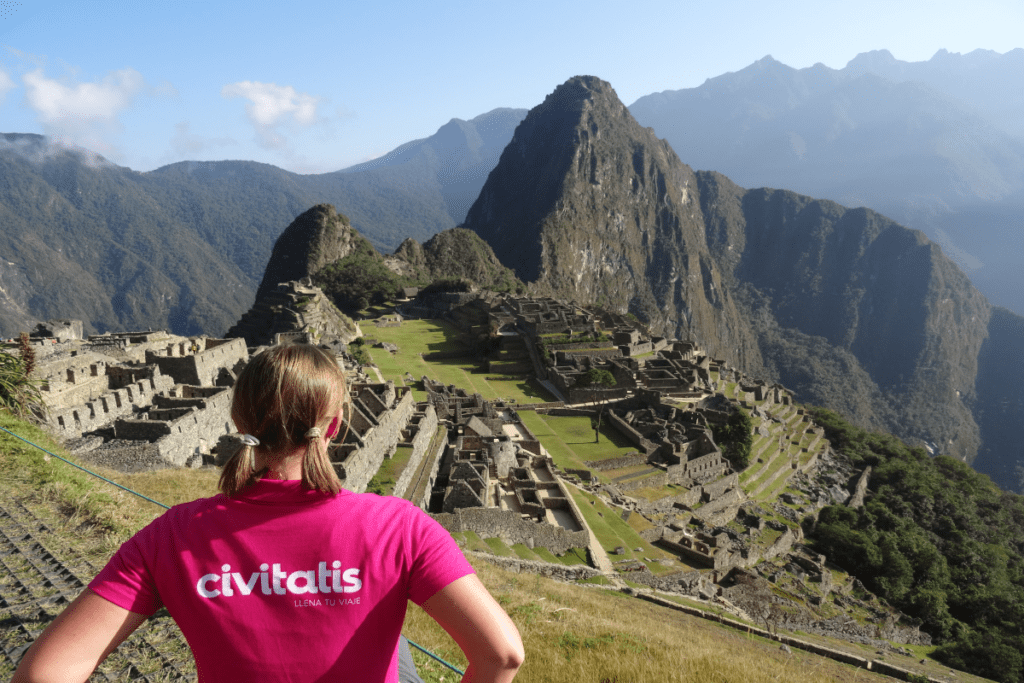
Civitatis Finds Niche in Selling Activities to Spanish-Speaking Travelers
Civitatis is capitalizing on its leading position in selling Spanish-speaking tours and activities as it pushes into new markets thanks to private equity support.
Have a confidential tip for Skift? Get in touch
Tags: europe , funding , investment , latin america , private equity , spain , startups , the prompt , tour operator , Travel Experiences , venture capital
- Manage Account
Emilio Estefan on Producing 2024 Leagues Cup Anthem ‘Nuestros Colores’: ‘I Wanted to Showcase Unity’
The euphoric track features Christian Nodal, Emily Estefan & Abel Pintos, among other artists.
By Griselda Flores
Griselda Flores
Senior Editor, Latin
- Share on Facebook
- Share to Flipboard
- Share on Pinterest
- + additional share options added
- Share on Reddit
- Share on LinkedIn
- Share on Whats App
- Send an Email
- Print this article
- Post a Comment
- Share on Tumblr

When the Leagues Cup approached Emilio Estefan to produce this year’s tournament anthem, the renowned producer and songwriter knew exactly what he wanted to capture with this song.
Trending on Billboard
Gloria & emilio estefan bring their legendary love to billboard latin women in music.
Estefan came up with a global sound that reflected the tournament’s international appeal and the teams’ diversity. The Leagues Cup had approached other producers, but “they came back with something too local, something either too Mexican or too Colombian,” explains Estefan. “I said, ‘Let me give it a try,’ and I produced a song that is true to what I do. I mix sounds. I’ve been doing that since Miami Sound Machine. We became famous because we combined cultures and sounds.”
The annual Leagues Cup is an international soccer tournament that includes the United States’ Major League Soccer (MLS) and Mexico’s Liga MX respective clubs. Lionel Messi’s Inter Miami is the defending champion. It’s the team that Estefan, who is Miami-based, is rooting for this year, he confirms. “Inter Miami brought so much unity to Miami,” he explains. “When you go to a game, you see people from all over the world.”
Just after Copa América ends, the soccer tournament currently taking place in the U.S., the 2024 Leagues Cup is set to kick off July 26, with all matches to be played in the U.S. and Canada.
Listen to “Nuestros Colores” below:
Get weekly rundowns straight to your inbox
Want to know what everyone in the music business is talking about?
Get in the know on.
Billboard is a part of Penske Media Corporation. © 2024 Billboard Media, LLC. All Rights Reserved.
optional screen reader
Charts expand charts menu.
- Billboard Hot 100™
- Billboard 200™
- Hits Of The World™
- TikTok Billboard Top 50
- Songs Of The Summer
- Song Breaker
- Year-End Charts
- Decade-End Charts
Music Expand music menu
- R&B/Hip-Hop
Videos Expand videos menu
Culture expand culture menu, media expand media menu, business expand business menu.
- Business News
- Record Labels
- View All Pro
Pro Tools Expand pro-tools menu
- Songwriters & Producers
- Artist Index
- Royalty Calculator
- Market Watch
- Industry Events Calendar
Billboard Español Expand billboard-espanol menu
- Cultura y Entretenimiento
Get Up Anthems by Tres Expand get-up-anthems-by-tres menu
Honda music expand honda-music menu.
Russian Warships Reach Cuban Waters Ahead of Military Exercises in the Caribbean
CARACAS, Venezuela (AP) — A fleet of Russian warships reached Cuban waters on Wednesday ahead of planned military exercises in the Caribbean in what some see as a projection of strength as tensions grow over Western support for Ukraine.
Three ships slowly crossed the mouth of the Havana Bay accompanied by small boats that guided them through the narrow channel. The flagship frigate, adorned with the Russian and Cuban flags, was greeted by 21 cannon salutes. Sailors in dress uniform stood in military formation as they approached the island.
A nuclear-powered submarine was expected to arrive behind them.
The U.S. military expects the exercises will involve a handful of Russian ships and support vessels, which may also stop in Venezuela.
Russia is a longtime ally of Venezuela and Cuba, and its warships and aircraft have periodically made forays into the Caribbean. But this mission comes less than two weeks after President Joe Biden
authorized Ukraine to use U.S.-provided weaponsto strike inside Russia to protect Kharkiv, Ukraine's second-largest city, prompting President Vladimir Putin to suggest his military could respond with "asymmetrical steps" elsewhere in the world.
"Most of all, the warships are a reminder to Washington that it is unpleasant when an adversary meddles in your near abroad," said Benjamin Gedan, director of the Latin America Program at the Washington-based Wilson Center think tank, referring to the Western involvement in Russia's war in Ukraine. "It also reminds Russia's friends in the region, including U.S. antagonists Cuba and Venezuela, that Moscow is on their side."
Although the fleet includes a nuclear-powered submarine, a senior U.S. administration official told The Associated Press that the intelligence community has determined no vessel is carrying nuclear weapons. The official, who spoke on the condition of anonymity to provide details that had not been announced publicly, said Russia's deployments "pose no direct threat to the United States."
U.S. officials last week said the Russian ships were expected to remain in the region through the summer.
Russian ships have occasionally docked in Havana since 2008, when a group of Russian vessels entered Cuban waters in what state media described as the first such visit in almost two decades. In 2015, a reconnaissance and communications ship arrived unannounced in Havana a day before the start of discussions between U.S. and Cuban officials on the reopening of diplomatic relations.
A State Department spokesperson told the AP that Russia's port calls in Cuba are "routine naval visits," while acknowledging its military exercises "have ratcheted up because of U.S. support to Ukraine and exercise activity in support of our NATO allies."
On Wednesday, Russian Foreign Minister Sergey Lavrov hosted his Cuban counterpart, Bruno Rodríguez, for talks in Moscow. Speaking to reporters after the talks, Lavrov thanked the Cuban authorities for their position on Ukraine.
"From the very beginning, Havana gave an assessment of what was happening outlining the absolutely correct, true reasons for what was unfolding (in Ukraine), and what was being prepared by the West for many years," Lavrov said.
Russian military and defense doctrine holds Latin America and the Caribbean in an important position, with the sphere seen as under U.S. influence acting as a counterweight to Washington's activities in Europe, said Ryan Berg, director of the Americas Program at the Washington-based Center for Strategic and International Studies.
"While this is likely little more than provocation from Moscow, it sends a message about Russia's ability to project power into the Western Hemisphere with the help of its allies, and it will certainly keep the U.S. military on high alert while they are in theater," Berg said.
The timing of this year's mission may serve Russia's purposes, but it is also raising questions of whether Venezuela's government may use it as an opportunity to shore up President Nicolás Maduro's bid for a third term in the July 28 election.
Venezuela's chief opposition coalition is threatening the ruling party's decadeslong grip on power, and engineering a crisis built on
simmering tensions with Guyanais among the scenarios that analysts believe Maduro's government could use to delay or cancel the vote.
"It is almost unthinkable that Maduro will risk actually losing power," said Evan Ellis, Latin America research professor with the U.S. Army War College.
"The most obvious alternative, consistent with
Venezuelan military's recent moves... is to fabricate an international crisis that would provide an excuse for 'postponing' Venezuela's election," he continued. "The presence of Russian warships in the vicinity would greatly add to the escalation risk of any such crisis that Maduro would fabricate, which is possibly the point."
Venezuelan voters approved a
referendum in December to claim sovereigntyover the Essequibo territory, which accounts for two-thirds of Guyana and lies near big offshore oil deposits. Venezuela argues it was stolen when the border was drawn more than a century ago.
Guyana is awaiting a decision regarding Venezuela's claim from the International Court of Justice, but Maduro's government does not recognize its authority.
The U.S. supports Guyana in the ongoing dispute and assisted it with surveillance flights late last year when Venezuela had threatened to invade the country. Guyana's government last month gave
permission for the U.S. military to flytwo powerful F/A-18F Super Hornet jets over its capital in a demonstration of close cooperation.
Guyana's Vice President Bharrat Jagdeo on June 6 acknowledged that the Russian fleet does not represent "a direct threat."
"Nevertheless, we're vigilant, and we're keeping this issue firmly in our policy radar," Jagdeo said in a press conference.
Salomon reported from Miami. Associated Press writers Andrea Rodriguez in Havana and Joshua Goodman in Miami contributed to this report.
Programs submenu
Regions submenu, topics submenu, approaches to digital public infrastructure in the global south, statistical review of world energy 2024, postponed: a complete impasse—gaza: the human toll.
- Abshire-Inamori Leadership Academy
- Aerospace Security Project
- Africa Program
- Americas Program
- Arleigh A. Burke Chair in Strategy
- Asia Maritime Transparency Initiative
- Asia Program
- Australia Chair
- Brzezinski Chair in Global Security and Geostrategy
- Brzezinski Institute on Geostrategy
- Chair in U.S.-India Policy Studies
- China Power Project
- Chinese Business and Economics
- Defending Democratic Institutions
- Defense-Industrial Initiatives Group
- Defense 360
- Defense Budget Analysis
- Diversity and Leadership in International Affairs Project
- Economics Program
- Emeritus Chair in Strategy
- Energy Security and Climate Change Program
- Europe, Russia, and Eurasia Program
- Freeman Chair in China Studies
- Futures Lab
- Geoeconomic Council of Advisers
- Global Food and Water Security Program
- Global Health Policy Center
- Hess Center for New Frontiers
- Human Rights Initiative
- Humanitarian Agenda
- Intelligence, National Security, and Technology Program
- International Security Program
- Japan Chair
- Kissinger Chair
- Korea Chair
- Langone Chair in American Leadership
- Middle East Program
- Missile Defense Project
- Project on Critical Minerals Security
- Project on Fragility and Mobility
- Project on Nuclear Issues
- Project on Prosperity and Development
- Project on Trade and Technology
- Renewing American Innovation Project
- Scholl Chair in International Business
- Smart Women, Smart Power
- Southeast Asia Program
- Stephenson Ocean Security Project
- Strategic Technologies Program
- Wadhwani Center for AI and Advanced Technologies
- Warfare, Irregular Threats, and Terrorism Program
- All Regions
- Australia, New Zealand & Pacific
- Middle East
- Russia and Eurasia
- American Innovation
- Civic Education
- Climate Change
- Cybersecurity
- Defense Budget and Acquisition
- Defense and Security
- Energy and Sustainability
- Food Security
- Gender and International Security
- Geopolitics
- Global Health
- Human Rights
- Humanitarian Assistance
- Intelligence
- International Development
- Maritime Issues and Oceans
- Missile Defense
- Nuclear Issues
- Transnational Threats
- Water Security
The Kremlin’s Caribbean Gambit: A Great Power Competition Spillover?

Photo: YAMIL LAGE/AFP/Getty Images
Commentary by Ariel González Levaggi and Vladimir Rouvinski
Published June 24, 2024
On June 12, the Russian guided missile frigate Admiral Gorshkov and the Yasen-class nuclear-powered submarine Kazan made a momentous arrival in Cuba’s capital, Havana. Accompanied by the tanker Akademik Pashin and the rescue tug Nikolay Chiker , they were met on the Malecón , Havana’s long esplanade along the coastline, by high-level Cuban officials and a large gathering of common Cubans who came to salute the Russian navy.
The reemergence of Russia in the Caribbean is not just a mere coincidence. It sets a dangerous precedent for the strategic spillover of great power competition , especially as it relates to Russia’s war in Ukraine. The Kremlin’s decision to position ships and submarines in the Caribbean can be seen as a calculated response to the recent announcement by NATO countries that Ukraine can use Western military weaponry to attack targets on Russian soil, as well as a response to signals from countries like France, which has not ruled out the possibility of sending troops to aid Ukraine in its fight against the Russian invasion.
Recently, the U.S. Congress approved a substantial $61 billion aid package to enhance humanitarian, economic, and military support for Ukraine. Furthermore, the first Ukraine peace summit in Switzerland saw the participation of over 90 countries, including 12 Latin American countries, some of which were new to the scene, like President Javier Milei’s Argentina; Milei is seeking to make his country the second Latin American NATO Global Partner . However, the international response to the Ukraine conflict is not uniform. For example, not all countries have signed the Joint Communiqué or endorsed Ukraine’s Peace Formula. Notable exceptions are Brazil, Colombia, and Mexico, along with India, Indonesia, South Africa, Thailand, and the United Arab Emirates. From this perspective, Russia is hoping to continue challenging Western efforts not only in Europe but also in other regions.
Russia’s Symbolic Reciprocity Strategy
Russia’s actions in the Caribbean are a form of symbolic engagement with allies that typically challenges U.S. leadership in the region , potentially signaling a shift in global power dynamics. To be precise, Russia’s display of military muscle in the Caribbean is part of a “ symbolic reciprocity ” approach to its relations with Latin America and the Caribbean. Contemporary Russian elites view the world as divided into two parts. One is the “near abroad,” the territories of the former Soviet Union, including Ukraine, Belarus, three Caucasian republics, and Central Asian countries. Because of its historical, economic, and cultural legacy, Russia believes that it has “natural” rights to these territories and that any extra-regional power must acknowledge this before engaging there. The rest of the world is the “far abroad,” where Russia may have interests but with limited specific engagement.
Using a similar lens, Russia considers Latin America, especially the Caribbean, as the United States’ “near abroad.” It seeks to engage these countries as a reciprocal action in response to U.S. support for Ukraine and other territories in Russia’s “near abroad.” However, in contrast to the United States’ tangible support for Ukraine, Russian actions have been primarily symbolic, demonstrating Moscow’s capacity to engage countries close to U.S. territory and highlighting Washington’s failure to isolate Russia globally. Yet, it also indicates that Moscow is comfortable operating in the Western Hemisphere, underscoring the potential for escalation.
The Shadow of the Soviet Legacy
During the early twentieth century, the newly formed Soviet Union aimed primarily to spread Communist ideology in Latin America. Moscow hoped that the growth of leftist movements in the region would ignite Communist revolutions similar to the October 1917 revolution in Russia. As a result, the covert support of leftist forces throughout Latin America antagonized powerful regional political and economic elites.
During World War II, many Latin American and Caribbean nations supported the Allies. This enabled Moscow to establish diplomatic relations and pursue economic engagement opportunities. However, this trend was short lived, and most of the Soviet presence dissipated with the onset of the Cold War. Despite this, Latin America remained a significant arena for the Soviet Union in the global contest of a bipolar world. Apart from Castro’s Cuba, which became heavily dependent on Soviet aid for its survival, Moscow continually sought opportunities to engage militarily, economically, and ideologically in the region to challenge U.S. dominance in the Western Hemisphere.
The Cuban Missile Crisis of 1962 revealed Washington’s red lines to Moscow. As political scientist Graham Allison wrote , the world was saved by a miracle. The Soviet Union then chose a more cautious and measured approach, eventually abandoning its ambition to challenge U.S. dominance in Latin America and the Caribbean. The collapse of the Soviet Union and the withdrawal of the Soviet military presence from Cuba marked the end of an era. Additionally, the end of Soviet support plunged Castro’s regime into a catastrophic situation, signaling to many Latin Americans the strategic failure of Russia.
Against the above background, it is unsurprising that the resurgence of Moscow’s interests in the region is often viewed through a Cold War lens. However, directly comparing today’s strategies and methods to those of the Soviet Union is misleading. Putin’s Russia has different objectives and tools of engagement . Unlike the Soviet Union, contemporary Russia is not prepared to invest significant resources, such as substantial economic aid, as it did with Cuba in the latter half of the twentieth century, in exchange for allowing Moscow to engage in full-scale geopolitical maneuvers near the U.S. homeland. Nowadays, Russia follows a different path.
Russia’s Contemporary Engagement in Latin America
Today’s Russian military presence in the Western Hemisphere is shaped by its reaction to the U.S.-led response to its actions in Ukraine and its ongoing military engagements there. Beyond displays of hard power, Russia employs a limited but multifaceted policy toolkit. This includes military, political, and economic relations, as well as information space.
On several occasions, Russia’s involvement in Latin American affairs has been more than that of a mere observer. For instance, in 2019, when the United States and around 60 other democratic nations backed Juan Guaidó in Venezuela, attempts to oust the authoritarian rule of Nicolás Maduro failed. One contributing factor to this failure was Russia’s support for Caracas, which included diplomatic backing for Maduro and assistance in circumventing sanctions by facilitating oil trade through Rosneft’s office in Panama.
In other instances, such as following the onset of the invasion of Ukraine, Brazil and five other Latin American nations were compelled to request the exclusion of Russian-produced fertilizers from sanctions lists and adopted a more nuanced stance toward the conflict in Ukraine. This was due to their heavy reliance on Russian fertilizer supplies, the disruption of which would severely impact the region’s agricultural sector. Another recent example is Russia’s leverage over Ecuador’s banana export industry, which coerced Quito into reconsidering its decision to transfer Soviet and Russian-made weapons that could potentially be used in the Ukrainian war effort.
In the information space, RT Actualidad, Sputnik Mundo, and affiliated media outlets controlled by the Russian government have been successful in spreading disinformation in the region for years.
At the same time, Russia’s display of military power in the Caribbean Sea (and the Atlantic) is not new since it is a key part of the symbolic reciprocity strategy. After a post–Cold War hiatus, their presence systematically increased as U.S./NATO-Russia relations deteriorated following the Russo-Georgian War in 2008. Back then, Moscow sent a fleet to Venezuela, including the nuclear-powered cruiser Peter the Great , the destroyer Admiral Chabanenko , and two Tu-160 nuclear-capable strategic bombers. In 2013, the missile cruiser Moskva visited Cuba and Nicaragua.
Following the 2014 annexation of Crimea, Russia’s Latin American diplomacy became more assertive. In 2018, high-level visits by Russian leadership were accompanied by the deployment of another two Tu-160 bombers, sparking severe discussions about a base access agreement at the La Orchila base in Venezuela. Additionally, the guided missile frigate Admiral Gorshkov visited the Caribbean in 2019. As Moscow became more assertive in the post-Soviet space, its foothold in the Americas focused increasingly on traditional anti-U.S. allies, namely Venezuela, Cuba, and Nicaragua.
Hence, the current deployment and global context differ significantly from the 1962 Cuban Missile Crisis. However, although the Kremlin has not yet crossed any of Washington’s red lines in the Caribbean, Moscow is again showcasing its naval projection capabilities overseas. This includes deploying advanced missile technology, such as the 3M22 Zircon hypersonic cruise missile on the Admiral Gorshkov frigate and the well-known Kalibr and Oniks cruise missiles. These missiles, which have been systematically used in Syria and Ukraine, are also equipped on the Kazan , a Yasen-class nuclear-powered submarine.
Containing Rivalry and Reciprocity in the Americas
Beyond the current U.S.-Russia military tensions in Eastern Europe, the Russian naval deployment in the Caribbean signals Moscow’s disapproval of NATO’s military buildup in Ukraine and the expansion of the Atlantic alliance. It also demonstrates Russia’s capacity and willingness to create disruptions in a region traditionally viewed by the Kremlin as the geographic area within Washington’s sphere of influence. This move signifies Moscow’s strategic intent to project power and challenge U.S. dominance in the Western Hemisphere, thus challenging Washington’s grand strategy of strategic denial in the region.
Besides U.S. strategic interests in Latin America and the Caribbean, the local perspective should be considered. From a historical angle, Latin America has been a zone of peace , relatively isolated from the intense great power competition seen in other parts of the world that has made the region less geopolitically relevant. Additionally, there has not been a state-to-state challenge to U.S. hegemony except for the projection of the Soviet Union in the Cold War through Cuba and Nicaragua and the indirect support for revolutionary movements through its ideological partners.
Despite the increasing affinity between Russia and its traditional allies in the region—Cuba, Nicaragua, and Venezuela—the current situation is, at least for now, less dramatic since these countries have shown limited eagerness to engage in great power politics with either Russia or China, at least in more sensitive military matters such as agreement on access to or construction of foreign military bases, authorization for the deployment of strategic weaponry, and hosting foreign military personnel.
Nonetheless, there is a display of “gray military cooperation” in which these countries have increasingly engaged with Moscow on sensitive topics such as weaponry acquisition, cooperation on counter-narcotics, Russian space infrastructure and naval visits, and mimicking coercive attitudes such as Venezuela’s approach toward Guyana. This gray cooperation can quickly transform the regional geopolitical chessboard into a new scenario of great power competition despite limited Russian overseas projection capabilities.
Another regional concern pertains to the deployment of nuclear assets in the region. While the most recent Russian naval visit to the Caribbean appears not to involve nuclear devices, the presence of a nuclear-powered submarine of an extra-regional power, along with a vessel carrying hypersonic cruise missiles for the first time in the Americas, raises concerns about potential strategic instability.
Back in 1967, following the Cuban Missile Crisis, Latin America and the Caribbean established a nuclear weapon–free zone with the signing of the Treaty for the Prohibition of Nuclear Weapons in Latin America and the Caribbean (known as the Treaty of Tlatelolco ), underscoring the importance of regional and global strategic stability. The treaty prohibits regional parties from testing, using, manufacturing, or acquiring nuclear weapons, as well as deploying any weapons from non-regional states. Another concern is hypersonic missile technology, which was previously focused on China’s space facilities in the Southern Cone. The deployment of Russian weaponry poses an additional challenge for both Washington and regional countries seeking to mitigate risks.
Russia’s actions indicate a readiness to escalate tensions by showcasing its military capabilities near U.S. territory, so it requires a careful but firm diplomatic response from regional actors. They will need to limit future disruptive military activities while aiming to uphold long-term strategic stability in the region. Hence, regional players must also contend with the symbolic message behind Russia’s actions.
By showing a military presence in the Caribbean, Moscow is not only responding to NATO’s activities in Ukraine but also asserting its influence in the United States’ “near abroad.” This strategic maneuver requires Latin American nations to balance their diplomatic and security policies wisely beyond active nonalignment due to the stakes of the game. Regional cooperation and dialogue will be crucial in addressing the challenges posed by extra-hemispheric powers and ensuring that Latin America and the Caribbean are prepared to protect their interests in the context of the rapidly changing international security environment.
Ariel González Levaggi is a non-resident affiliate with the Americas Program at the Center for Strategic and International Studies in Washington, D.C. He is also the director of the Center for International Studies, Pontifical Catholic University of Argentina (UCA). Vladimir Rouvinski teaches at Icesi University in Colombia and is the director of the Politics and International Relations Lab (PoInt).
Commentary is produced by the Center for Strategic and International Studies (CSIS), a private, tax-exempt institution focusing on international public policy issues. Its research is nonpartisan and nonproprietary. CSIS does not take specific policy positions. Accordingly, all views, positions, and conclusions expressed in this publication should be understood to be solely those of the author(s).
© 2024 by the Center for Strategic and International Studies. All rights reserved.

Ariel González Levaggi
Vladimir rouvinski, programs & projects.

Sign up for the Health News Florida newsletter
Florida’s dengue travel cases exceed this year’s expectations, data show.

State travel dengue cases are higher than what experts predicted for the year. Most cases have come from people visiting from Brazil and Cuba, which are undergoing historically large outbreaks.
Travel-related cases of dengue for June have exceeded what was expected for the year, according to the Florida Department of Health.
“The dengue cases concern me,” said Steve Harrison, manager of Orange County Mosquito Control. “I don’t think the public needs to be overconcerned right now, but dengue is on my radar.”
The health department published expectations for travel-associated cases of the mosquito-borne virus, expecting 214 cases for the year. As of Wednesday, travel cases were at 237.
In Orange County last year, 18 travelers were diagnosed with dengue. Halfway through this year, the county has 16, data shows. However, the county mosquito control team has responded to 21 cases.
“The official number is different because anytime a patient goes to a hospital and they're displaying symptoms of dengue, they're tested. Then the state will contact us with some of these suspected cases,” Harrison said. “But we don't really have the time to wait to see if it's confirmed.”
According to the World Health Organization, dengue case numbers are expected to increase around the world as global warming creates more suitable temperatures for mosquitoes carrying the virus.
Where is dengue spreading?
Most Florida cases have come from people visiting from Brazil and Cuba, which are both undergoing historically large outbreaks. Thirty-two percent of the travelers were from Cuba, and 24 percent were from Brazil, state data show.
According to the Centers for Disease Control and Prevention, dengue cases have risen dramatically across South America. In 2023, more than 4.6 million cases and 4,000 deaths were reported in the Americas region. As of Monday, there have been more than 9.7 million dengue cases.

On Tuesday, the CDC issued a Health Alert Network Health Advisory notifying health care providers and public health authorities of an increased risk of dengue in the U.S.
As for locally acquired dengue, Florida has recorded eight cases this year: six were from Miami-Dade County, one from Pasco County and a case in Hillsborough County was in late May.
Can dengue spread in Central Florida?
An increase in travel cases combined with hotter-than-average temperatures have Harrison concerned about it being the perfect environment for more locally acquired cases.
The mosquito responsible for carrying dengue is known as Aedes egyptide.
“The hotter temperatures speed up the process going from egg to adult. It could shorten the duration, which now you have more adult mosquitoes in that area that could potentially bite somebody,” Harrison said.
Mosquito control has stepped up its efforts to stop any potential spread of locally acquired cases by setting up barrier treatments to kill mosquitoes in areas where people who have been diagnosed spent time.

“You have a person that travels here, they're sick, they're shedding virus. If a mosquito were to bite them, they could then take in the virus, amplify it and then start spreading it," Harrison said.
The calls have been a strain on mosquito control, which has been forced to step up its efforts to reduce the risk of local mosquitoes harboring the virus. Aedes egyptide is particularly difficult to kill since it behaves differently than other mosquitoes. Aedes egyptide, also known as the yellow fever mosquito, has modified its behavior to zone in on its primary source of food – humans.
“Aedes egyptide is pretty unique as a daytime biter,” Harrison said. “They're well-adapted to living with people. They've kind of learned our habits. They know that we're primarily up during the day, we're hanging out on the back porch on the weekend.”
What is mosquito control doing about it?
“It’s very labor intensive, you know, it's not uncommon to have 100 or 110-plus homes within that 600-foot radius that we have to go door to door, do inspections, do treatments, do education,” Harrison said.
To keep up, mosquito control increased its efforts of knocking down possible dengue sites during the day. The team is unable to rely on nighttime truck sprays as it would with most other mosquitoes due to Aedes egyptide' s diurnal habits.
Mosquito control has stepped up its efforts to stop any potential spread of locally acquired cases by setting up barriers to kill mosquitoes in areas where people who have been diagnosed spent time.
What residents should do
Residents can help mosquito control keep numbers down by tipping and tossing still water on their properties.
“If they can do that, that will cut down you know the competent vectors and could spread this disease,” Harrison said. “We want people to be on guard again, don't panic. Don't be overly concerned. If mosquitoes are active, obviously cover your skin with some clothing or some insect repellent.”
Symptoms of dengue
Symptoms usually last two to seven days. The most common symptom of dengue is fever but also includes the following:
- Aches and pains (eye pain, typically behind the eyes, muscle, joint, or bone pain)
- Nausea, vomiting
Copyright 2024 Central Florida Public Media

Cuba counts on Russians to boost still-ailing tourism sector in 2024
- Medium Text

Sign up here.
Reporting by Nelson Acosta, editing by Dave Sherwood and Cynthia Osterman
Our Standards: The Thomson Reuters Trust Principles. New Tab , opens new tab
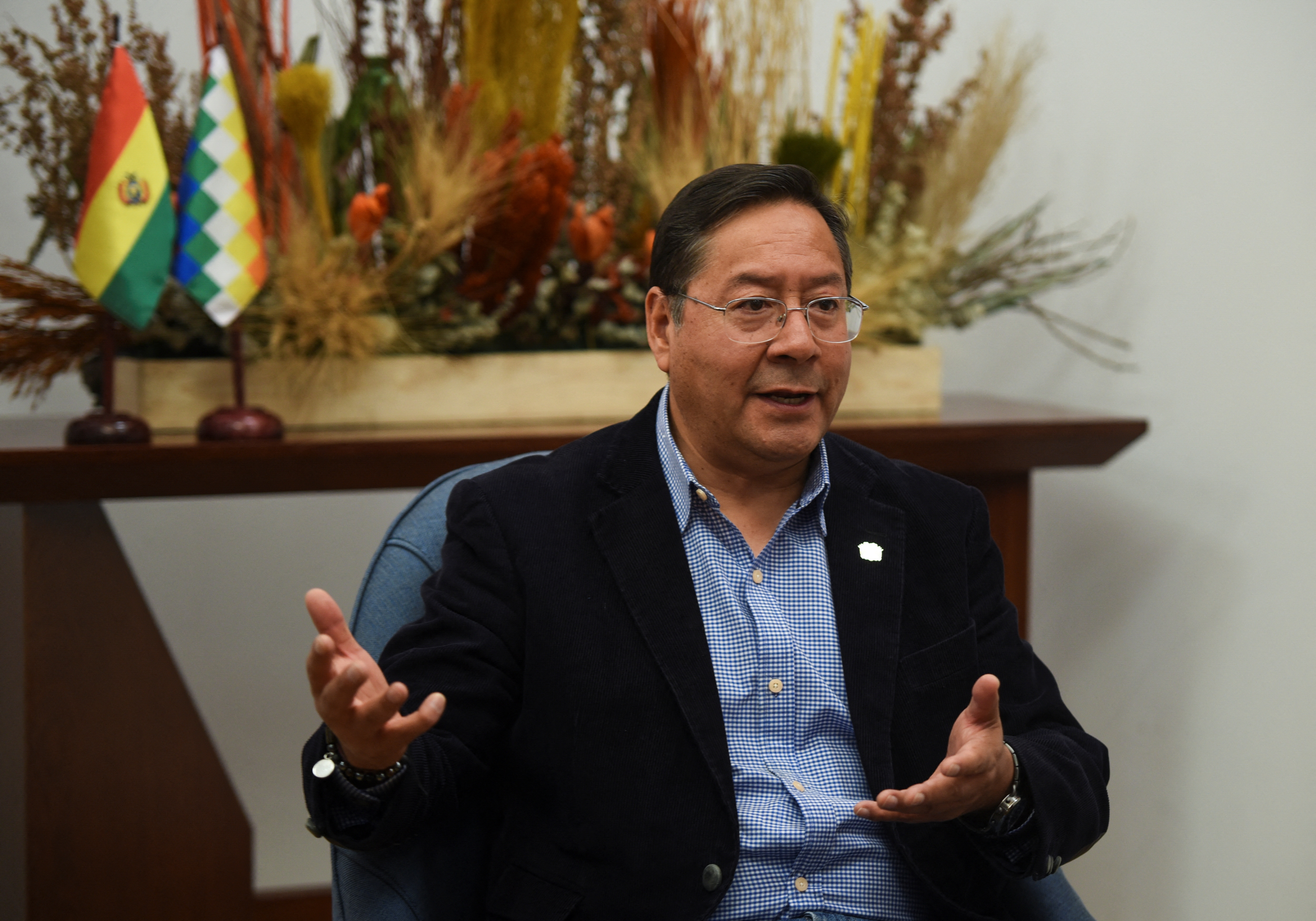
World Chevron
Bolivian general who led failed coup gets six months pre-trial detention.
Detained Bolivian general Juan Jose Zuniga was ordered to six months "preventive detention" for his role leading a failed coup against the government earlier in the week, a top prosecutor said on Friday.


IMAGES
VIDEO
COMMENTS
Connect with Cuba on a personal level. Custom Latin Travel is a full service travel agency that offers legal travel to US Citizens and Residents to Cuba. We partner with travel brands, agencies and operators that we admire and respect and who share our ethos of meaningful cultural exchange. Our unique Cuban-American team only offers Cuba as a ...
Grande novità! Biglietteria aerea, Noleggio auto, Hotel, Trasferimenti e Vacanze All Inclusive. Per qualsiasi dubbio non esitare a contattarci. Viaggi personalizzati a Cuba con Cuba Latin Travel, il tour operator leader nei viaggi per Cuba. Offerte voli, hotel, noleggio auto e tour con assistenza in loco.
Consider us your on-the-ground team in Cuba. If you're a travel provider, we'll work with you to design a tour perfect for *your* clients, with your brand and our full on-site support. You sell the tour, we'll run it. If you're a family or small group, we can help coordinate your entire trip to Cuba, complete with custom itinerary and ...
Experience Cuba's culture and natural beauty through a private cultural itinerary tailored to your interests with Exeter Latin America. Our custom journeys comply with US regulations for legal travel to Cuba and feature in-depth cultural exchanges with locals, privately-owned accommodations, and support for Cuba's burgeoning private sector.
Cars, Cigars, Cuban Rhythms and Caribbean Cooking. A leisurely evening walk along the malecón, savoring the invigorating sea breeze. An unplanned visit to a neighborhood bar, where Cuban couples move to the enchanting beat of a live trio. The complex history of Cuba brought to life by its people, sharing their experiences firsthand.
Cuba Latin Travel Close menu. The travel Schedule Prices Booking. Cuba through the lens An exclusive tour designed for photographers and photo lovers. If there is a magic island, it's Cuba. Discover the trip From Saturday 21 to Monday 30 October 2023. Christopher Columbus defined it:
Cuba is liberally dotted with pristine sandy beaches and restored colonial towns. While the façades of the pre-revolutionary period remain, they sit alongside increasingly efficient new hotels, resorts, roads and other tourist facilities. Journey Latin America offers a diverse selection of Cuba holidays, suited to all; whether you're a solo ...
Taking care of your Latin America travel needs is Evie, our Senior Latin America Specialist. There are few people as passionate about the people and culture of the region, ensuring that in addition to the extraordinary destination highlights, you will experience the most authentic side of Latin America with a True Travel itinerary.
Cuba. From expertly designed Private Journeys to trail-blazing Escorted Group Tours, browse our range of carefully crafted holidays to Cuba. Use the options below to filter by region, holiday style and duration.
Local expertise. More than 20 years of local expertise has made Cubania Travel the best agency for adventure and cultural tours in Cuba. Our deep-rooted local connections and insider knowledge guarantee authentic experiences, off-the-beaten-path discoveries, and seamless cultural immersion, making us the top choice for sustainable Cuban adventures.
Cuba Latin Travel ... 10400 La Habana, Cuba Tel. +53 5 277 2183; Tel. +53 5 847 2646; Tel. +53 7 836 9737; Social connections Follow Us All published material is the property of AMIA TRAVEL SRL and / or their respective authors. The design, logo and illustrations are the property of AMIA TRAVEL SRL - Any reproduction is prohibited. ...
Welcome to Cuba Latin Travel. Book incredible things to do around the world. city / house. From - To. 24/06/2024 - 25/06/2024. Guests. ... All published material is the property of AMIA TRAVEL SRL and / or their respective authors. The design, logo and illustrations are the property of AMIA TRAVEL SRL - Any reproduction is prohibited. ...
As the door to travel to this lovely island in Latin America is now open to many Americans, I often hear get a lot of questions regarding how to plan an independent trip to Cuba. This is also known as travel under the "Support for the Cuban People" OFAC category. In this post I'll go over the basics for traveling to Cuba, such as travel ...
Cuba Latin Travel. September 18, 2023 by Amanda Mathews. Summary Close. 1. An Exploration of Cuba: A Captivating Latin Travel Experience. 1.1. A Historically Enriched Tapestry. 1.2. The Allure of Culture and Art. 1.3. Nature's Untouched Beauty. 1.4. A Warm and Welcoming People. 1.5. Conclusion
U.S. summer travel often overlaps with the months of increased dengue activity in many countries. Epidemics in the Americas region increase travel-associated cases and limited local transmission in the continental United States. A higher-than-expected number of dengue cases (total of 2,241 cases, including 1,498 in Puerto Rico) were reported in ...
Cuba Latin Travel tour operator, Brebbia. 46,100 likes · 50 talking about this · 169 were here. Siamo un giovane, ma affermato tour operator italiano con sede certificata a Cuba. Ci occupiamo prin
Aguascalientes, Mexico - Florida's Leilani Correa has announced that she has been signed to Latin basketball team, Panteras de Aguascalientes. Correa travels to the Mexican state after being drafted by the Indiana Fever in the 2024 WNBA Draft. Leilani Correa was just short of being named to the official 12-player WNBA roster but will continue to pursue her professional career overseas.
Beijing has expanded its military relationships with Havana and Caracas, even building an intelligence base in Cuba. More than 20 Latin American countries have now signed on to China's Belt and ...
A university professor was jailed Tuesday in Estonia after being found guilty of spying for Russian military intelligence, part of a campaign of sabotage, electronic warfare and information gathering that Estonian officials blame on Moscow.. Viacheslav Morozov, a Russian citizen who taught at Estonia's country's most prestigious university, was sentenced to six years and three months in ...
A shrinking military and decreased patriotism are just two of many troubling shifts recently seen in America -- but are we too far gone to return to 'the good ole days' of the country? American ...
Travel to Cuba as an American for purely touristic purposes is strictly prohibited. All Experience Cuba tours abide by the rules set forth by 31 CFR § 515.565 (b) People-to-People Travel OFAC general license. ... Director for Latin American Studies at the Council on Foreign Relations, Sweig traces the geography, history and identity of Cuba in ...
Civitatis CEO, Alberto Gutiérrez. Credit: Ana Morales Civitatis' growth. Civitatis' offerings grew from 29,000 in 2019 to 87,000 in 2023.In the same time period, it nearly doubled its Spanish ...
The Cuban producer and songwriter was in charge of creating the 2024 Leagues Cup anthem, for which he recruited Christian Nodal, Taboo and more acts. Emilio Estefan Talks Producing 'Nuestros ...
People line up to visit Russian frigate Admiral Gorshkov (not pictured) docked in Havana's bay, Cuba, June 13, 2024. Alexandre Meneghini/Reuters Russian frigate Admiral Gorshkov enters Havana's ...
Russian military and defense doctrine holds Latin America and the Caribbean in an important position, with the sphere seen as under U.S. influence acting as a counterweight to Washington's ...
Back in 1967, following the Cuban Missile Crisis, Latin America and the Caribbean established a nuclear weapon-free zone with the signing of the Treaty for the Prohibition of Nuclear Weapons in Latin America and the Caribbean (known as the Treaty of Tlatelolco), underscoring the importance of regional and global strategic stability. The ...
Most Florida cases have come from people visiting from Brazil and Cuba, which are both undergoing historically large outbreaks. Thirty-two percent of the travelers were from Cuba, and 24 percent were from Brazil, state data show. According to the Centers for Disease Control and Prevention, dengue cases have risen dramatically across South America.
Cuba is counting on winter-weary Russians to help boost the Caribbean island nation's ailing tourism sector in 2024, according to the Cuban ambassador in Moscow, after a disappointing 2023 saw ...
Since the last European election in 2019, business travel has undergone significant transformations. By interrupting travel, the Covid-19 pandemic brought to light the sector's crucial benefits to our societies, including connecting people from different backgrounds and a substantial contribution to economic growth. Now that it is on the road to…
Cuba, Europe, the Middle East (via Iran) and now the Far East are all pressure points he is exploring. Moscow would like to reconstitute the old anti-Nato communist bloc world-wide.